Getting Off the Beaten Track in Lithuania, Latvia and Estonia
The three countries that constitute the Baltic States – Estonia, Latvia and Lithuania – are very popular tourist destinations these days. This is particularly true of the capitals. If you visit either Tallinn or Riga in the summer or on a public holiday, you’ll find them teeming with all kinds of visitors, ranging from culture-vultures wandering around the respective Old Towns to groups of lads and lasses parading through the streets on stag dos and hen parties (not so much Vilnius, although its popularity is definitely growing year on year).
There is a good reason for this popularity: all three cities are terrific places to visit, especially if you are based in Europe and looking to get away for a long weekend. None of the Baltic capitals are overwhelming in size, yet each one has enough to fill at least a couple of full days of exploration. What’s more, although they are certainly not the bargain they once were, each capital is still relatively good value for money. English is widely spoken, the dining and entertainment scene is decent, and there are some excellent day trips away from the respective cities for those with an urge to see more.
But, as in so many regions around the world, there is way more to the Baltic countries than just the capitals. In fact, given that the actual landmass for all three republics combined is only 175,015 km² (as a comparison, France is 643,801 km²), the region is incredibly varied. To list but a few of the region’s attractions, you’ve got endless coastline, vast areas of dense forest, quaint villages and fairy-tale castles, all packed into a relatively small space.
The recent history combined with the ancient is also a factor to consider: you could be visiting a medieval fortress in the Latvian countryside on one day and then a former closed Soviet town on the Estonian/Russian border the next.
To quote the latest edition of the Estonia, Latvia & Lithuania Lonely Planet guide, the Baltic States are ‘teensy but diverse.’
CONTENTS (click down arrow to show)
Off the Beaten Track Places in Latvia
Ventspils International Radio Astronomy Centre and Irbene
Off the Beaten Track Places in Lithuania
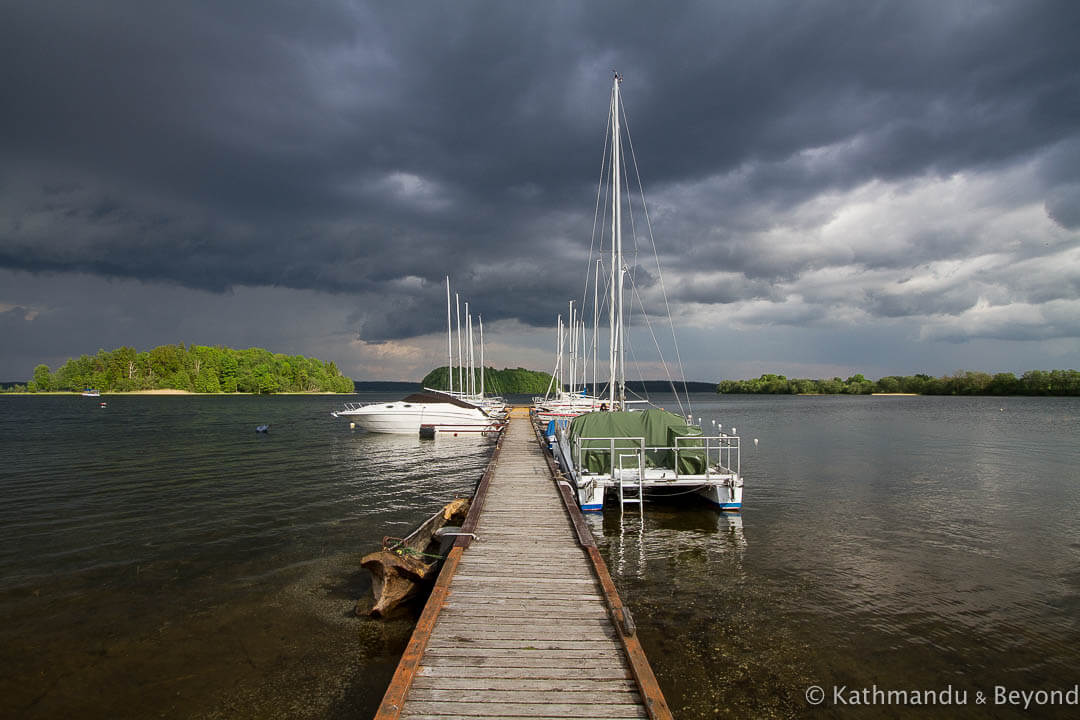 Lake Plateliai in Zemaitija National Park, Lithuania
Lake Plateliai in Zemaitija National Park, Lithuania
We haven’t been everywhere in the Baltic States but we have made four trips to the region and, on the last one (May 2018), we hired a car and stayed for just over three weeks. The flexibility of having our own transport was invaluable and meant we could get to places that would have been hard, but not impossible, to visit using public transport.
Driving in this part of the world is a cinch. Even the capitals are fairly easy to navigate (although parking can be a nuisance) and as soon as you get away from them the whole experience of driving yourself becomes very pleasurable. Roads are generally in excellent condition and relatively free of traffic. For example, when we drove from Kolka in northwest Latvia down the coast to Ventspils there was one section where we didn’t see another car for about thirty minutes. And, when you do come across other drivers, their tendency is to pootle around rather than tear it up.
Another good thing about renting a car in the Baltic States is that most of the rental car companies consider the three countries to be one territory and so you can take your hire car around the entire region without paying a supplement for taking it from one country to the next.
We’ve always thoroughly enjoyed our time in this small area of northern Europe and have seen some marvellous places. Admittedly, we have visited a large part of the area with our own vehicle but most of the places listed below are reachable on public transport. In no particular order, below are 16 of our favourite lesser-visited locations in the Baltic States.
Off the Beaten Track places in Estonia
Haapsalu, Estonia
There are plenty of reasons to visit this rather old-fashioned seaside town on the west coast of Estonia. In the old part of the town, there are some fine examples of 19th-century Baltic architecture, especially down on the promenade where, among other things, you will find the ornate former Resort Hall (Kuursaal), now a summer-only cafe and teahouse.
The town’s medieval Episcopal (Bishop) Castle is also worth seeing, as is the Estonian Railway Museum, which consists of a handful of colourful, and mostly rusting, locomotives and other rolling stock in an outdoor setting. The station’s 200-metres plus covered platform was said to have been the longest in the Russian Empire when originally constructed in the early years of the 20th-century.
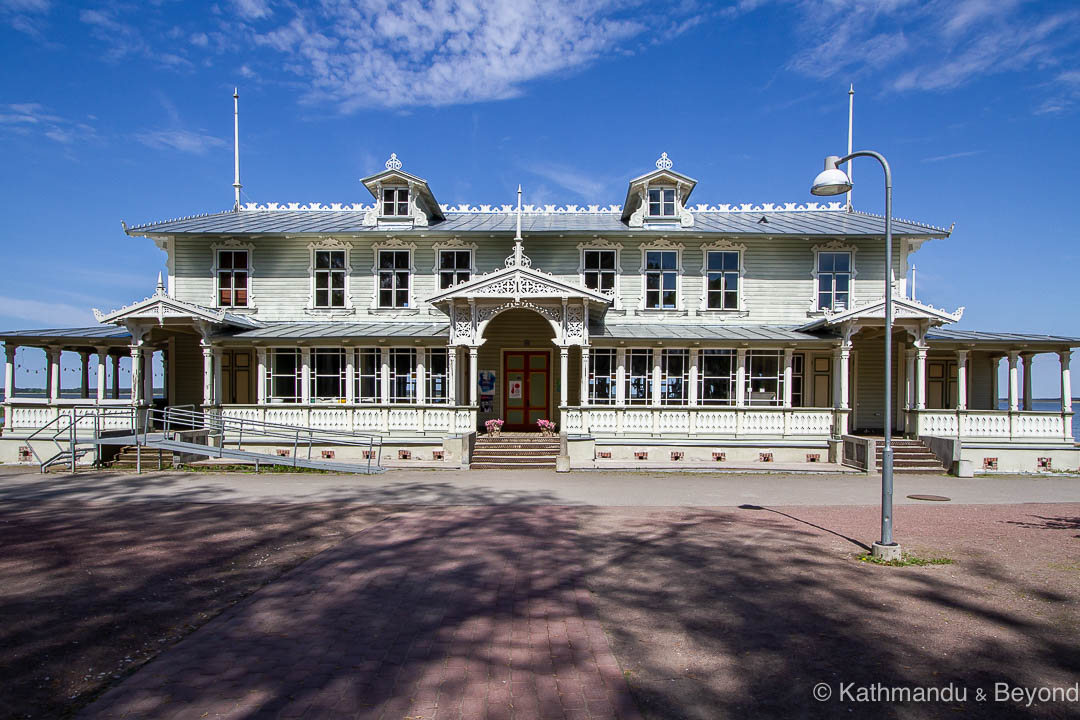 Resort Hall (Kuursaal) in Haapsalu, Estonia
Resort Hall (Kuursaal) in Haapsalu, Estonia
In our opinion, however, Haapsalu’s two most interesting sights were away from the town. The first was the superb ruins of Ungru Manor, an imposing Neo-Baroque structure which was never properly finished in the first place and then partially torn down by the Soviet military after WWII so that the concrete could be used to smooth out a runaway that they were building nearby.
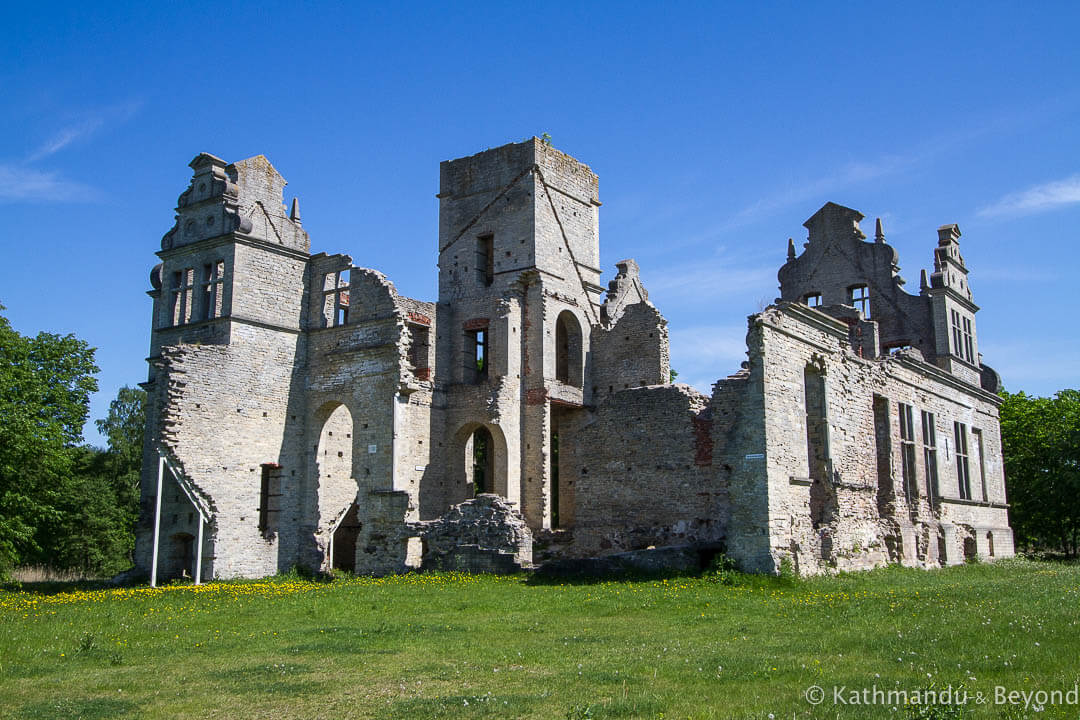 Ungru Manor near Haapsalu, Estonia
Ungru Manor near Haapsalu, Estonia
The said runway was part of what used to be Haapsalu, or Kiltsi, Airfield and this was the other interesting location we found away from the town. The airfield is literally situated directly behind the manor and has been abandoned since the dissolution of the Soviet Union in the early 1990s. The runway, which is 2.5km in length, is still in remarkably good condition and you can still see quite a few of the twenty-odd hangars that were originally constructed on the site as well.
Apparently, you should have a permit to enter the territory of the airfield (*). We didn’t know this at the time and nobody was there to stop us from visiting. In fact, you could walk to the airfield in a matter of minutes from the backside of Ungru Manor although, if you want to see the main cluster of hangars then it is best to continue up the main road a little longer and enter the site from there.
(*) The permit is obtainable from 17 Lahe Street in Haapsalu Mon – Fri from 9am to 4pm GPS 58.94819, 23.52869).
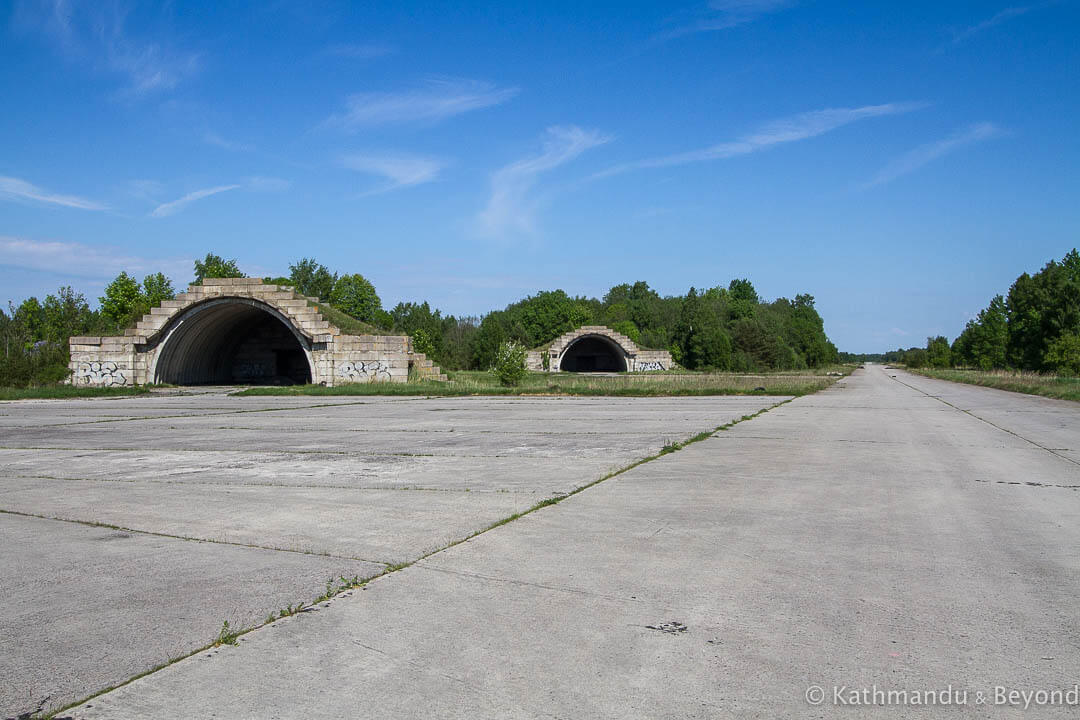 Haapsalu Airfield (Kiltsi Airfield) near Haapsalu, Estonia
Haapsalu Airfield (Kiltsi Airfield) near Haapsalu, Estonia
How to get to Haapsalu on public transport
There are at least hourly buses connecting Haapsalu with Tallinn. Ungru Manor and Haapsalu Airfield are about 7km from the centre of Haapsalu and it’s highly unlikely that there is any public transport heading in that direction. Besides, having your own wheels means that you can have a little drive up and down the runway although, and this is another thing we found out retrospectively, there is a 50km/h speed limit which you are required to adhere to – oops!
Narva, Estonia
Narva is Estonia’s easternmost city and is spitting distance from Russia. Indeed, only the Narva River separates the two countries and around 90% of the population are either ethnic Russian or Russian-speakers. There is a large (and busy) border crossing bang in the centre of town.
The main reason to come here, apart from to experience an Estonian city like no other, is to see the city’s mighty 13th-century Hermann Castle, which comprises of a small museum and is dominated by a large 51 metre-tall tower. If it is still there, you can also see what is probably the last public statue of Lenin in Estonia. There was renovation work going on inside the fortress when we visited in May 2018 and the area around the statue of Mr L was rather unceremoniously turned into the builder’s makeshift yard.
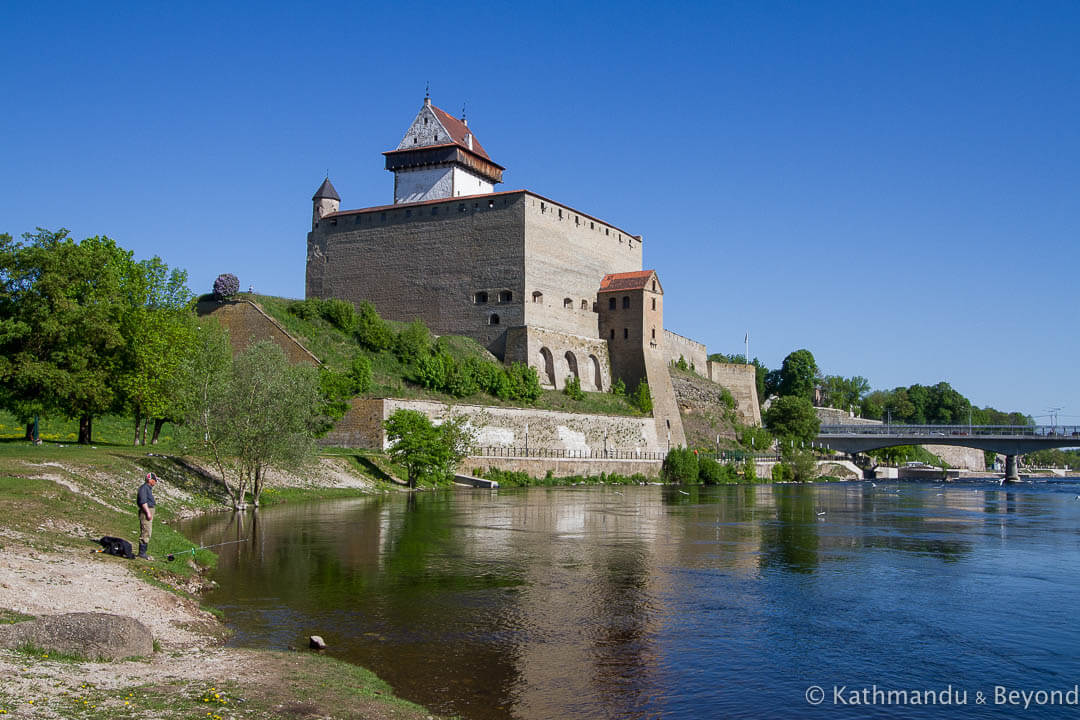 Hermann Castle in Narva, Estonia
Hermann Castle in Narva, Estonia
The other fortification that can be clearly seen from Hermann Castle is Ivangorod Fortress in Russia. To get a nice panoramic vista of both strongholds, head down the viewpoint on the river which is marked on the map.
There are other things to do in Narva. There are a couple of churches worth checking out, namely the Orthodox Cathedral of the Resurrection and the Alexander Church. Also, the Old Town, which is centred around the Town Hall, is a nice place for a wander for an hour or so. We were also rather taken with Veetorn Residential (Water Tower Residential), a rather sexy brutalist tower block not too far from the castle.
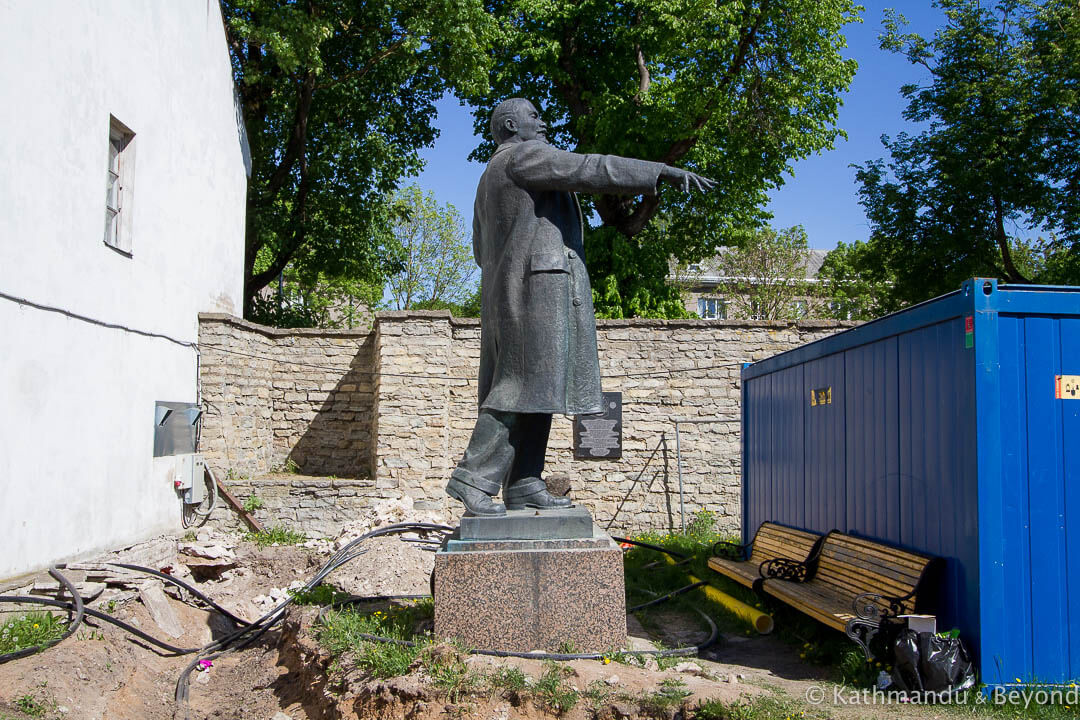 Lenin inside Hermann Castle in Narva, Estonia
Lenin inside Hermann Castle in Narva, Estonia
How to get to Narva on public transport
There are at least hourly buses connecting Narva with Tallinn as well as regular buses linking the city with Tartu.
Narva is also a good base for trips further afield, or en route to somewhere else if you have your own transport.
Narva-Jõesuu, Estonia
The first of these is Narva-Jõesuu (‘Mouth of the Narva’, as in the river), a seaside town 14km northwest of Narva. The place had a sense of faded-grandeur about it and we saw a couple of the old sanatoriums dotted around. Most of them appeared to no longer be in use but, much to our frustration, they were impossible to access. Despite signs of neglect, Narva-Jõesuu is still a popular resort town and you’ve only got to take one look at the gorgeous, sandy beach to see why.
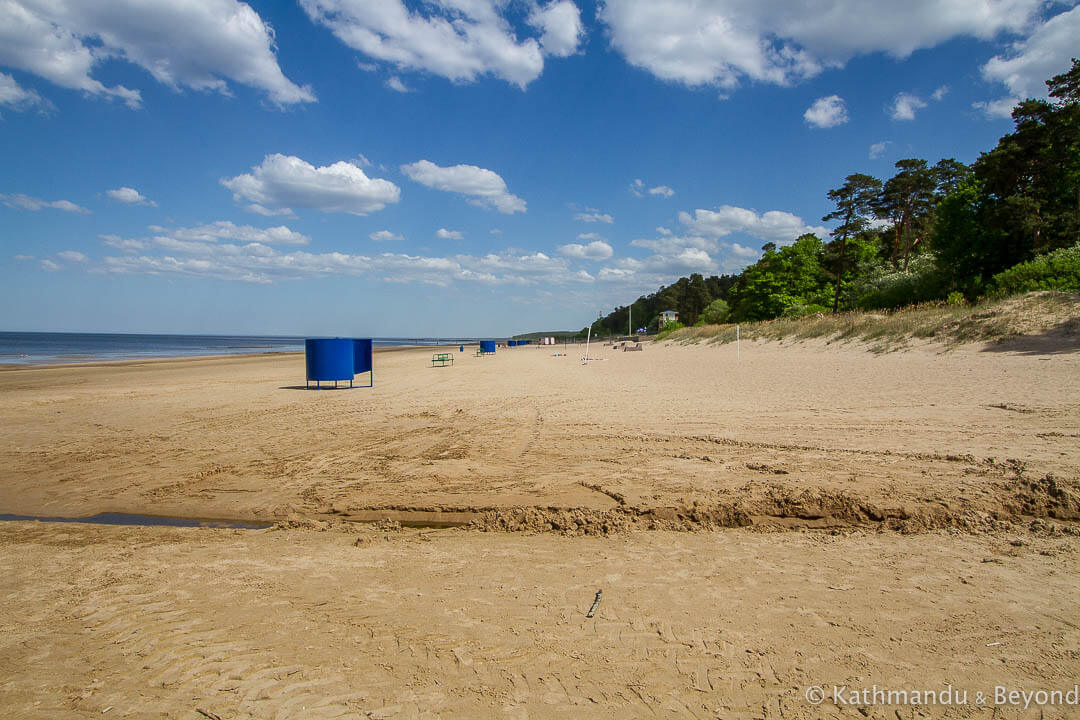 The fantastic beach at Narva-Joesuu, Estonia
The fantastic beach at Narva-Joesuu, Estonia
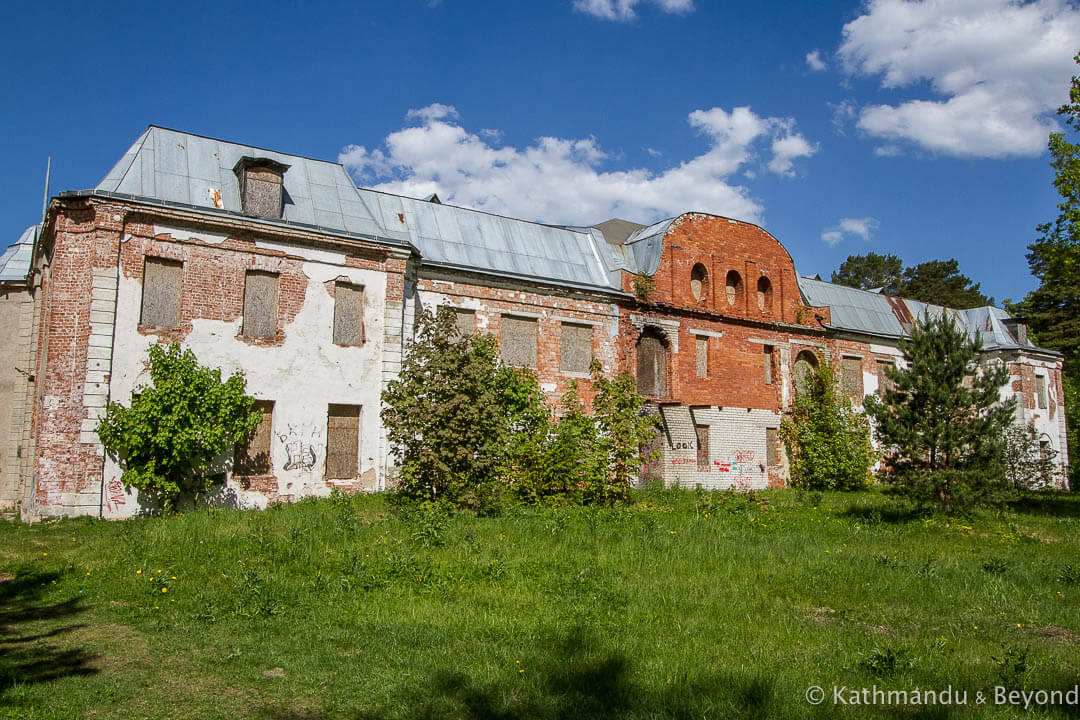
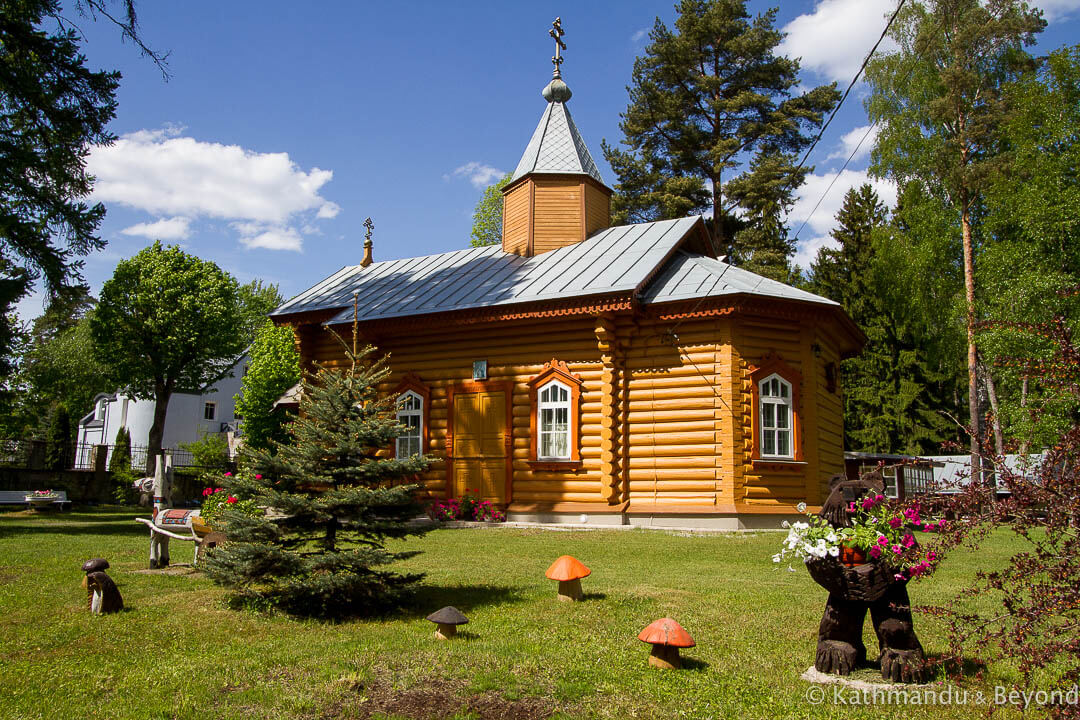
Above left: Former Cultural Centre in Narva-Joesuu and above right: Church of the Kazan Icon of the Mother of God in Narva-Joesuu
How to get to Narva-Jõesuu on public transport
A local bus runs roughly hourly between Narva and Narva-Jõesuu, but the latter is spread out and it’s easier to see it properly if you have your own transport.
If you are driving, just follow the road that runs adjacent to the Narva River. Along the way, you will spot a Soviet T-34 tank and war memorial that is worth a quick stop.
Sillamäe, Estonia
If you head in a westerly direction from either Narva or Narva-Jõesuu you will reach Sillamäe, an utterly fascinating and rather strange town that was developed in the 1940s under the Soviet regime to support a nearby secret uranium processing plant. As such it was a closed city and a special pass was required in order to enter. Apparently, Sillamäe didn’t even appear on most maps of the USSR.
Although there is now a modern part to the city, nearly all of the original town was constructed in the Stalinist neoclassical style and, as such, is very palatial in appearance. What was odd, though, was that we hardly saw anyone in this part of the city. The wide boulevard that led down to the Baltic Sea was devoid of people and it wasn’t until we headed to the newer part of town a bit later on that we saw a decent resemblance of life.
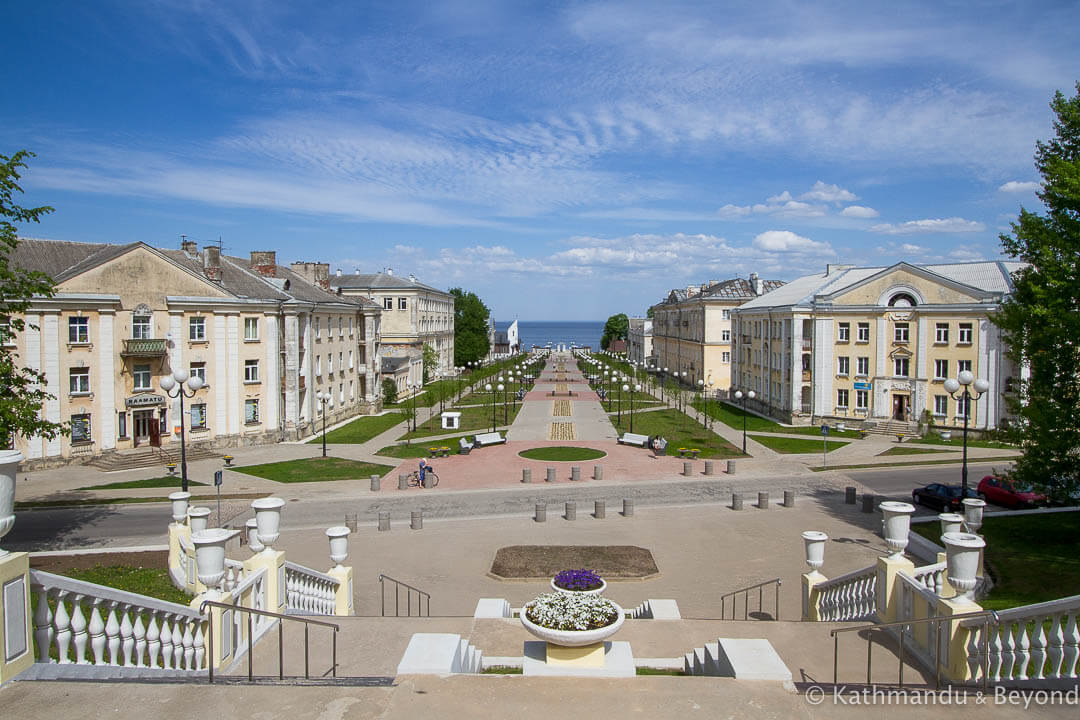 The centre of Sillamäe, Estonia
The centre of Sillamäe, Estonia
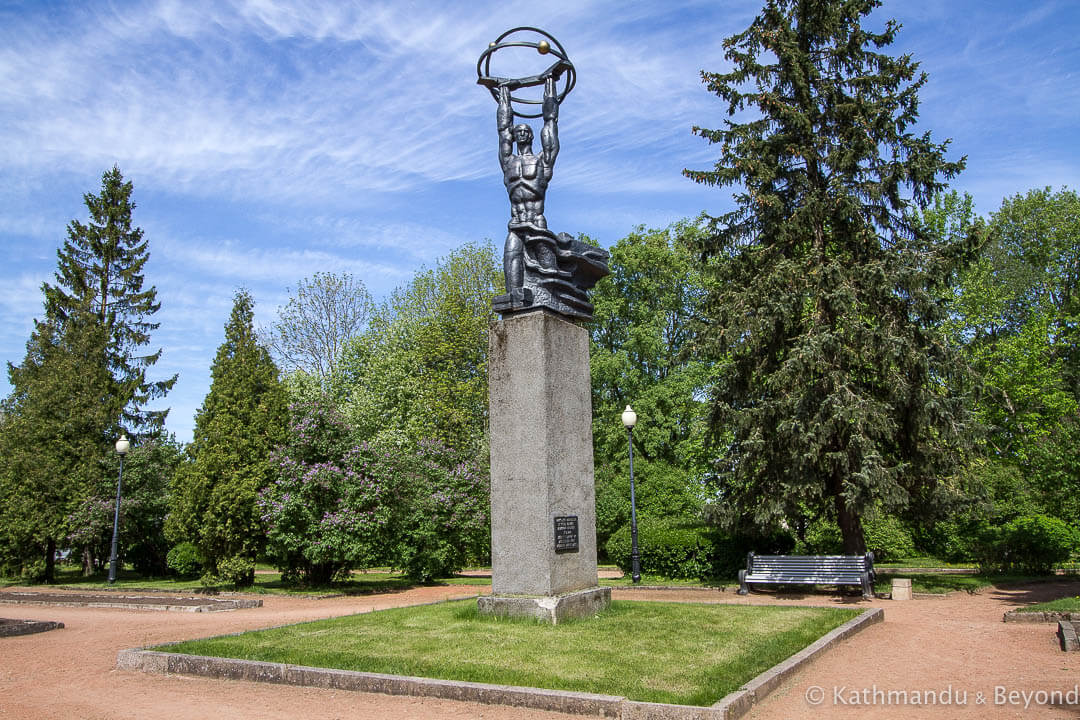 Monument to Atomic Power in Sillamae, Estonia
Monument to Atomic Power in Sillamae, Estonia
As well as wandering around the original part of Sillamäe, we also visited the Cultural Centre because in the basement/former nuclear bunker there was a collection of Soviet-era paraphernalia which included around two hundred icons and images of Lenin as well as a lot of other mementoes from that time.
The visit to the Cultural Centre ended up being one of the most interesting parts of our entire road trip because it resulted in a really engrossing conversation with one of the young ladies working there who was allocated to be our guide as she spoke some English.
Like in Narva, most of Sillamäe’s residents, including our guide (who was named Alexandria), speak Russian as their first language and consider themselves to be Russian rather than Estonian. We spoke at length about this with Alexandria as she showed us around not only the basement museum full of Soviet-era paraphernalia but other parts of the Cultural Centre as well. And when we discovered she was born in Crimea this prompted even further interesting conversations including a Crimean’s perspective on the current situation there and us learning about the existence of Alien Passports, which are issued to people in this part of Estonia because either they choose not to accept Estonian nationality, which is what Alexandria wanted, or they haven’t been granted it.
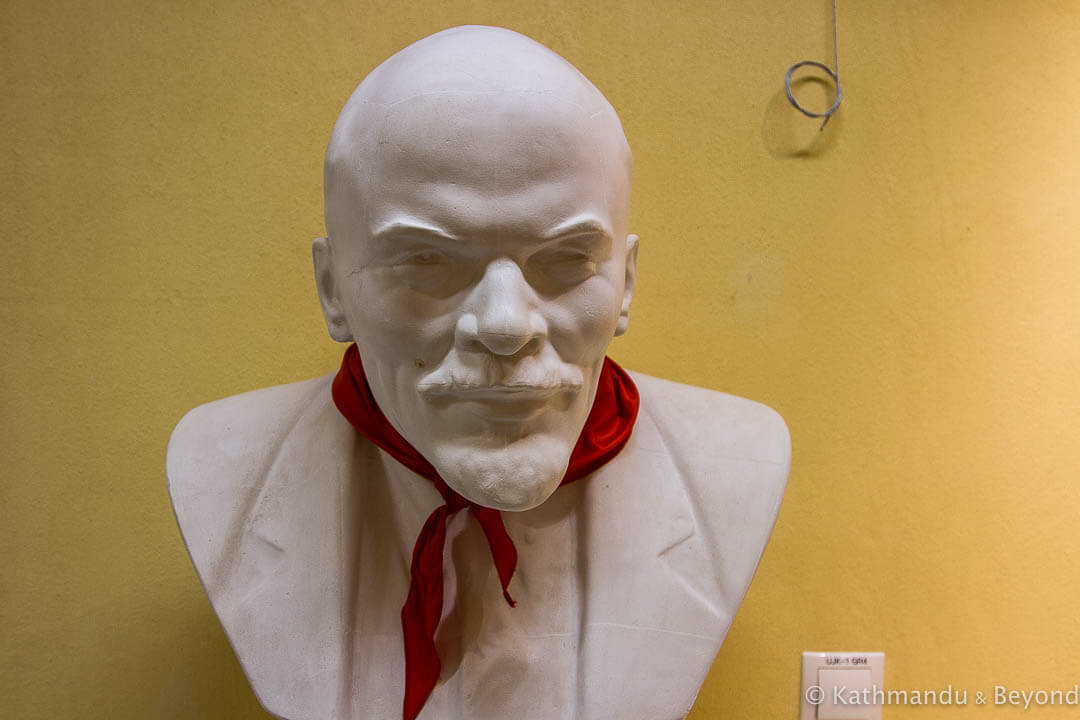 One of the many Lenin busts inside the Cultural Centre in Sillamae, Estonia
One of the many Lenin busts inside the Cultural Centre in Sillamae, Estonia
All in all, we had an engrossing half a day in Sillamäe, which was longer than we expected to stay there and messed up our schedule for the rest of that day somewhat, but, all things considered, it was time well spent and totally worth the visit.
How to get to Sillamäe on public transport
There are regular buses (at least hourly) connecting Narva and Sillamäe plus a few buses a day travelling between Narva-Jõesuu and Sillamäe meaning that, if you are based in Narva, it should be possible to visit both Narva-Jõesuu and Sillamäe as a day trip from the city.
Viivikonna, Estonia
The final interesting place near Narva that we visited was the quasi-abandoned settlement of Viivikonna, a former oil shale mining town that fell on hard times when the mine became obsolete. You will probably need your own transport to visit Viivikonna because public transport is thin on the ground but, if you want to see what the possibilities are and learn more about the place read our dedicated post on the subject.
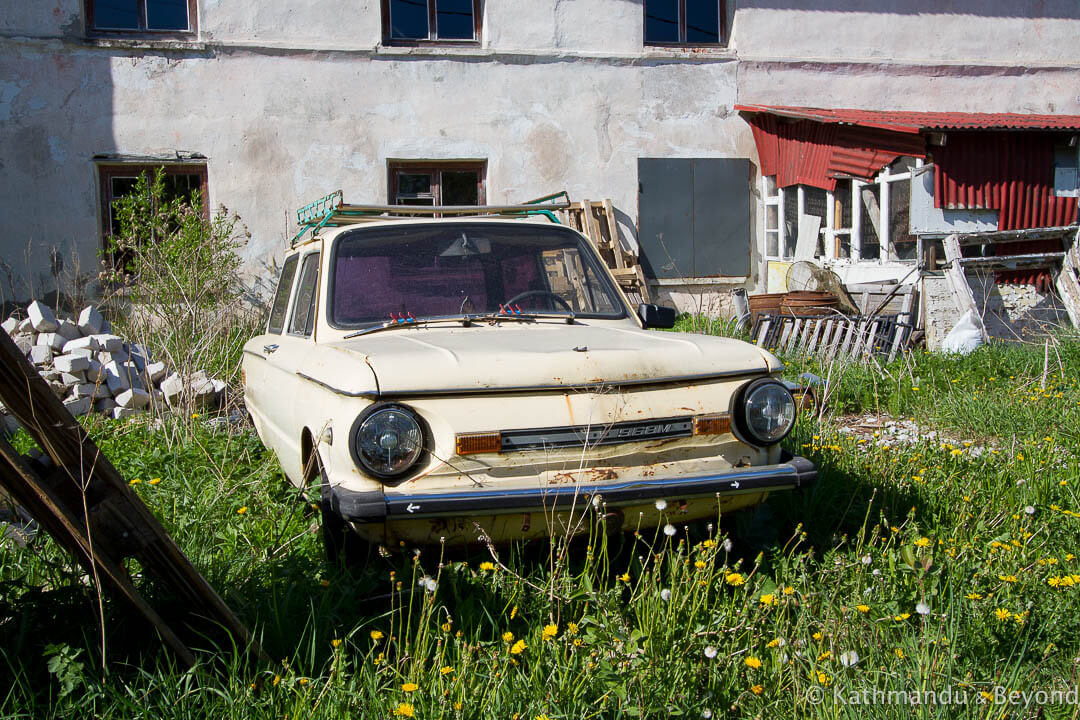
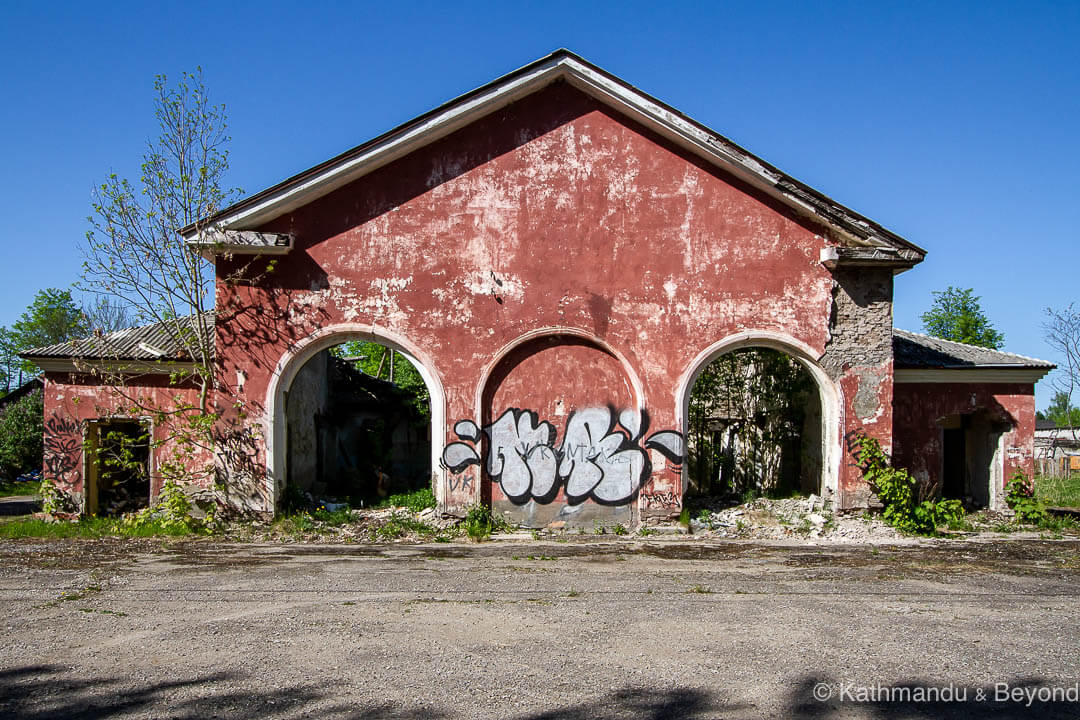
Viivikonna, Estonia
Off the Beaten Track Places in Latvia
Daugavpils, Latvia
Latvia’s second city, which is situated around 230km northwest of Riga, isn’t an especially attractive one but it does have one of the best fortresses we have visited in a long while.
Not really how you would envisage a classic fortress to be, Dinaburg Fortress in Daugavpils is a mishmash of pre-revolution Tsarist Empire-style fortifications coupled with Soviet-era apartment blocks and rundown outlying buildings, many of which now lay in a state of abandonment. The only part of the fort that appears to still be in use is the former arsenal which now houses an art museum named after the well-known artist, Mark Rothko, who was local to the area before emigrating to the USA in 1913.
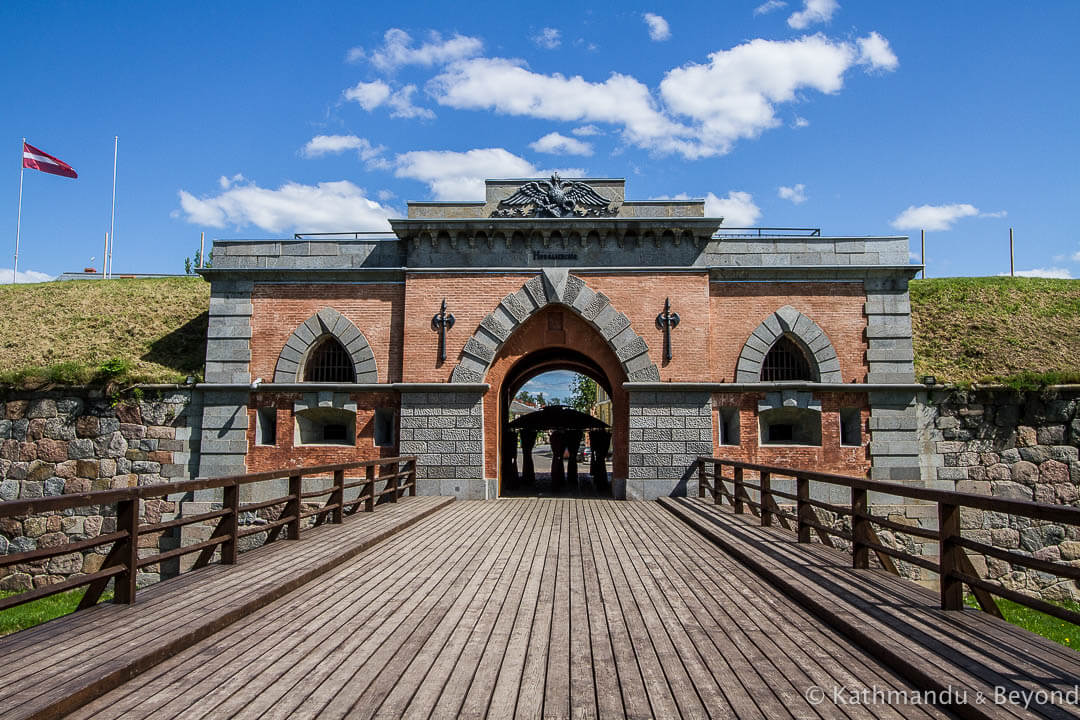 Dinaburg Fortress in Daugavpils, Latvia
Dinaburg Fortress in Daugavpils, Latvia
Given we are a bit heathen when it comes to this style of art (although we did have a couple of Rothko reproductions hanging in our house in England when we used to live in it), we didn’t bother visiting the museum but instead spent our time trying to get inside as many of the abandoned structures as was possible. This was far more interesting, in our opinion, and, apart from a near run-in with a crazy person, we spent an enjoyable couple of hours exploring some of the neglected parts of the fortress.
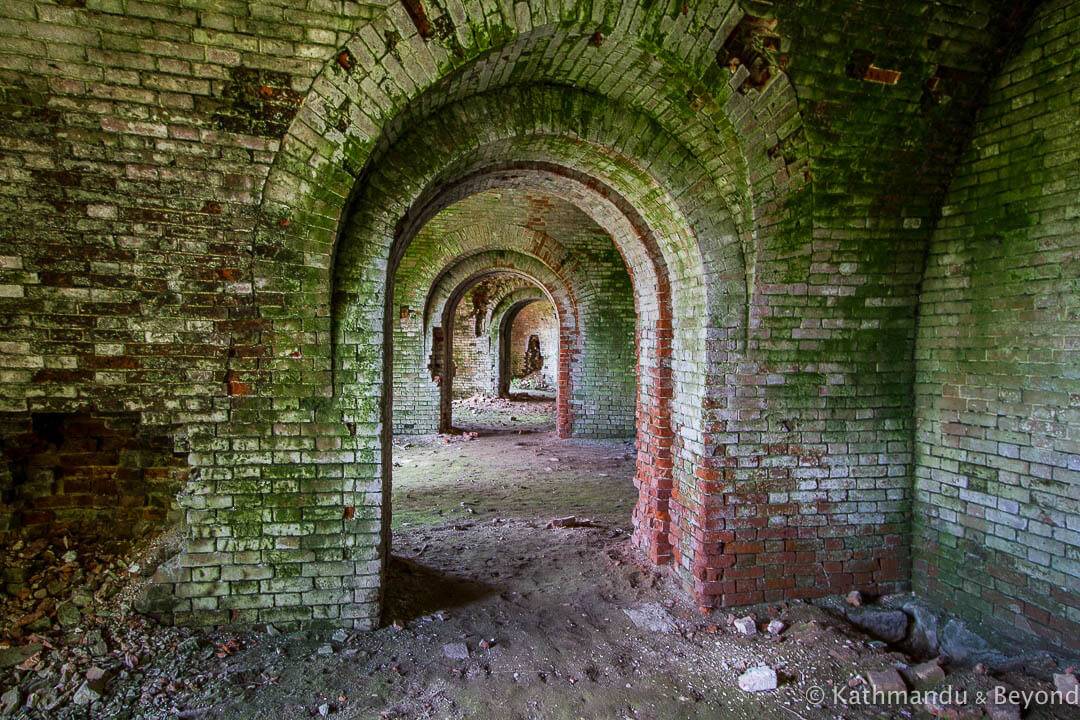
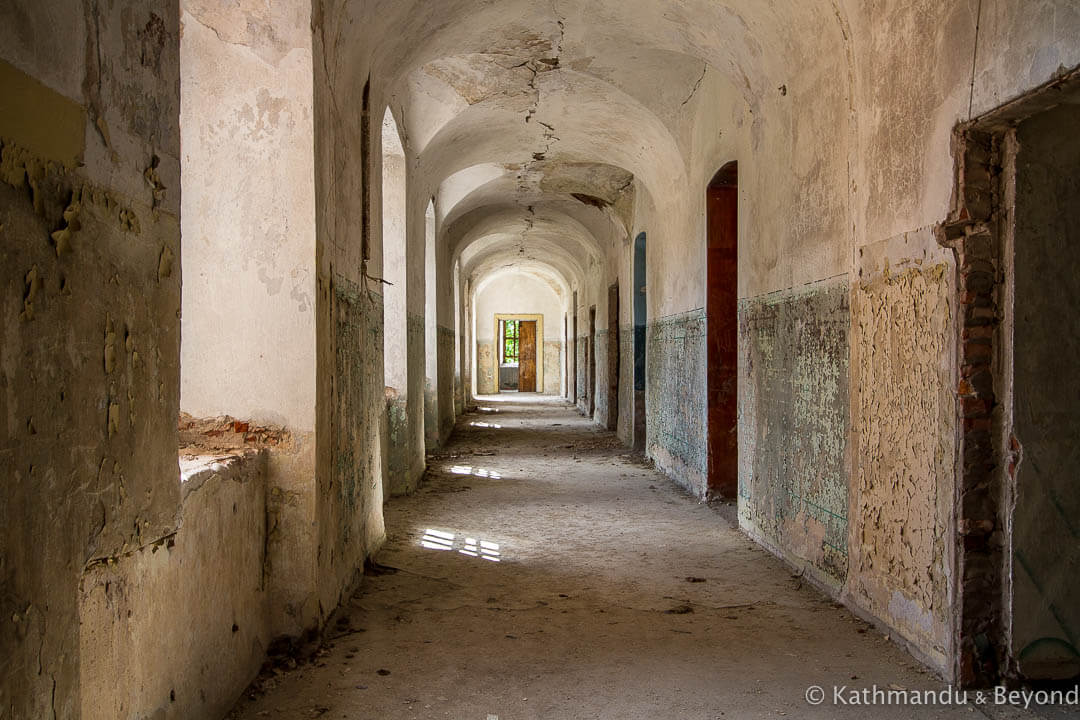
Above: The interior of Dinaburg Fortress in Daugavpils
The other reason to come to Daugavpils is to visit Church Hill, an area in the centre of the city where there are important churches from four different faiths. The four religions are Lutheran, Catholicism, Russian Orthodox, and the Old Believers, a Christian sect connected with the Eastern Orthodox Church. For us personally, the churches weren’t as interesting as the fortress but they are all close to each other and easy to wander between and so worth visiting if you are in the city.
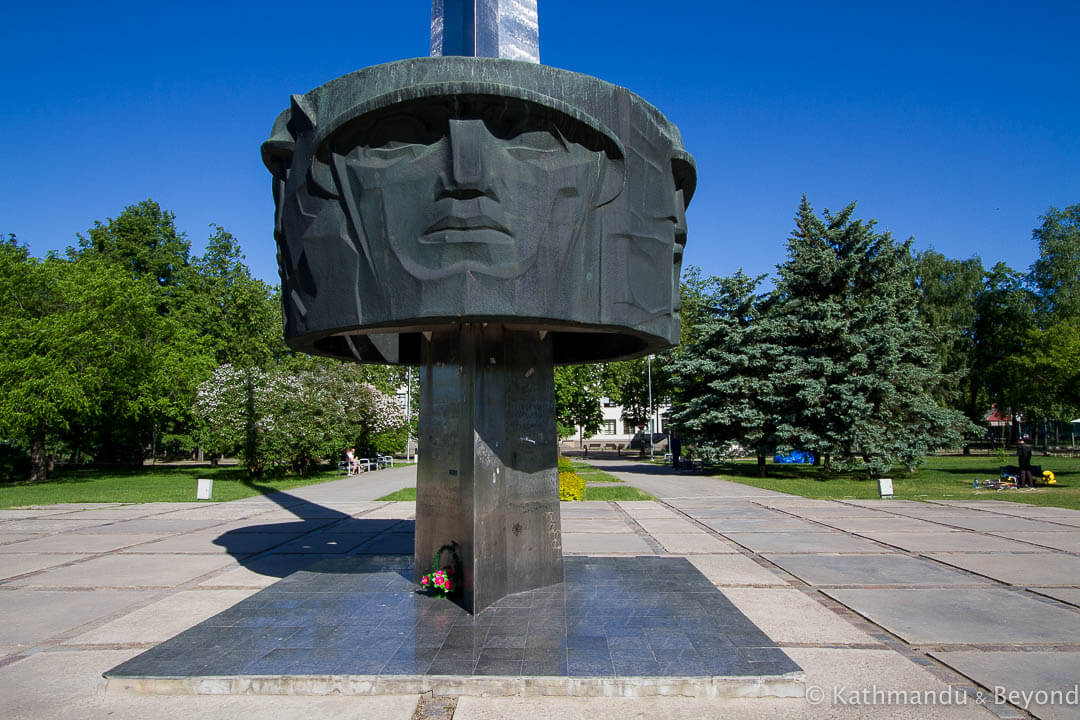 World War II Memorial in Daugavpils, Latvia – more interesting than a church!
World War II Memorial in Daugavpils, Latvia – more interesting than a church!
How to get to Daugavpils on public transport
There are both buses and trains connecting Daugavpils with Riga.
Cape Kolka, Latvia
Cape Kolka is an intriguing place where the Gulf of Riga meets the Baltic Sea. The area also has an interesting recent history. During the time of the Estonian SSR (Soviet Socialist Republic), the entire peninsula was sealed off and used as a top-secret military base by the Soviets. Disused buildings from this time can still be seen at both the cape and in the nearby village of Kolka, a forlorn place that didn’t appear to have any life whatsoever when we stopped by for a brief mooch round.
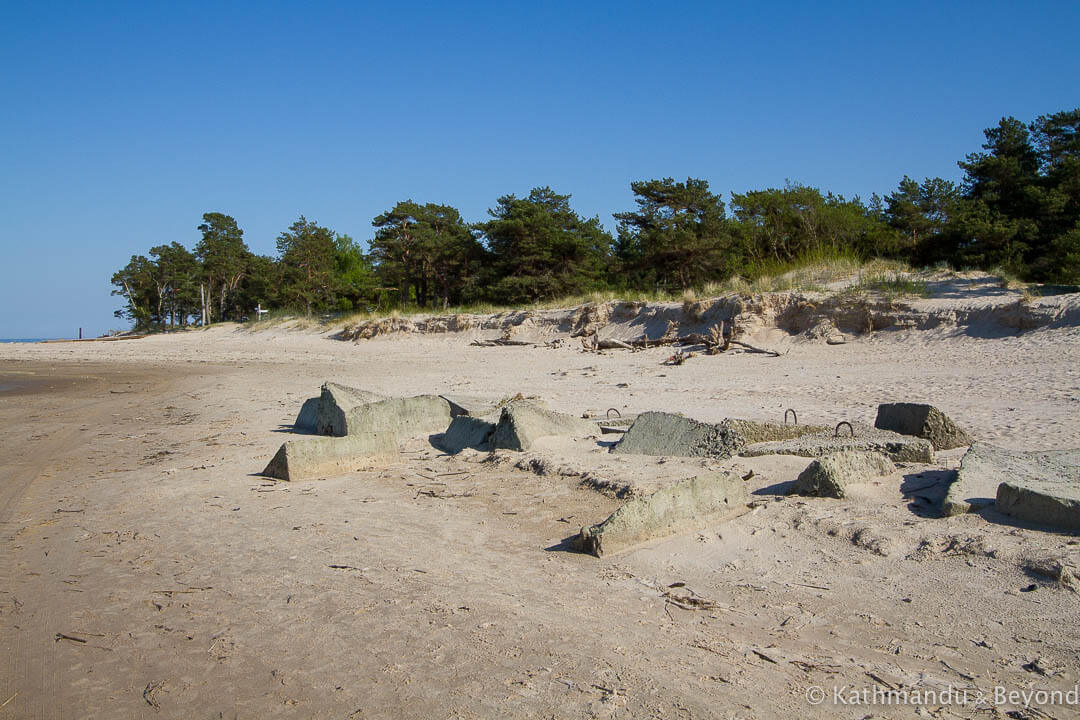 Cape Kolka, Latvia
Cape Kolka, Latvia
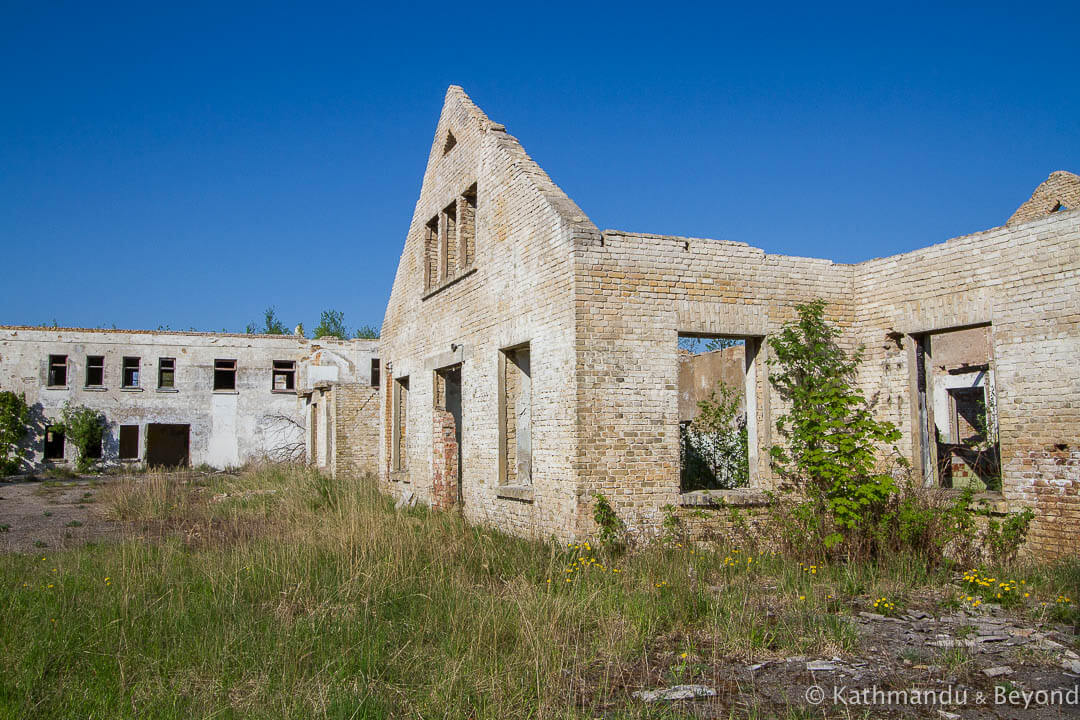
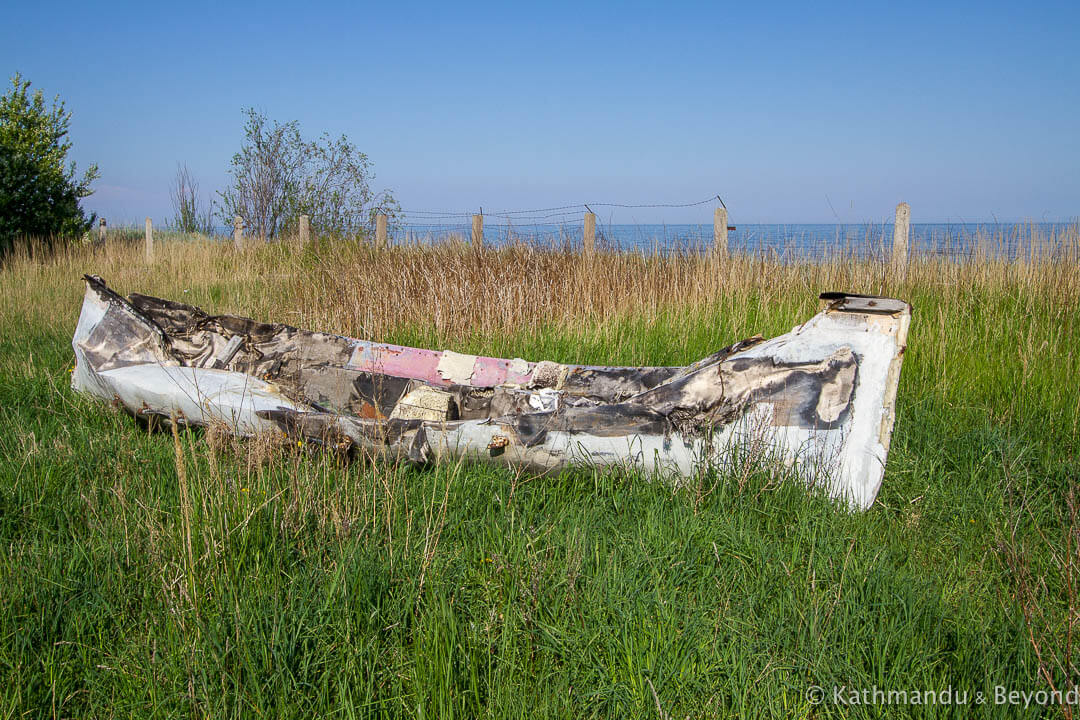
The village of Kolka, Latvia
Other reminders of the Soviet period include the extremely straight and overly wide road that leads out of Kolka towards the city of Ventspils. Flanked by forest on both sides, it was originally constructed as a secret runway for the Soviet military. The road remains the widest in Latvia and is a lovely route to motor along.
Ventspils International Radio Astronomy Centre and Irbene, Latvia
Eventually, at around the 50km mark having left Kolka, the road will reveal an unpaved turn-off that leads through the forest to another of the area’s vestiges of the Cold War. Ventspils International Radio Astronomy Centre, as it is now known, is a Soviet-built astronomy installation that is surrounded by sand dunes and was erected in order to spy on the West. It remained a secret until 1993 and, with prior arrangement and payment of a fee (minimum €20 spend), it is possible to go on a guided tour of the main radio telescope at the site. Tours only operate in the summer months, from the 1st May onwards.
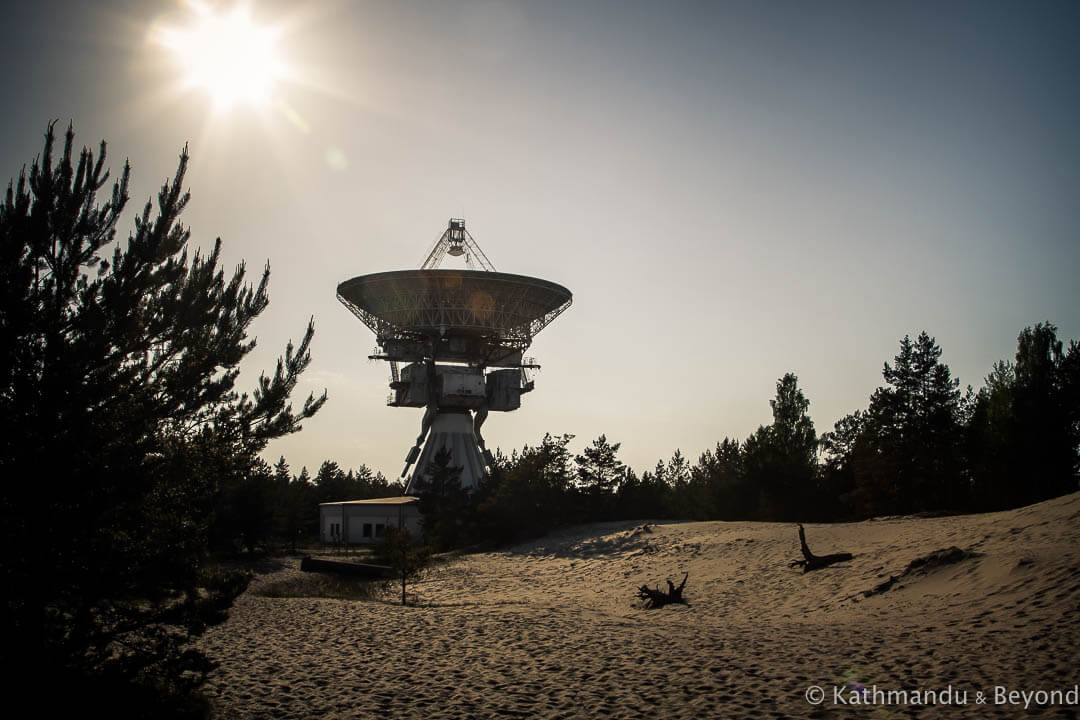 Ventspils International Radio Astronomy Centre, Latvia
Ventspils International Radio Astronomy Centre, Latvia
What was more interesting for us, however, was the nearby former secret Soviet town of Irbene which was purposely built to house the servicemen, along with their families, who worked at the base. Comprising of apartment blocks, a school, sports centre and a shop, the settlement fell into a state of abandonment not long after the Soviet military left the area in 1994.
Although every structure we entered was an empty shell with nothing left inside, Irbene was still a great place to wander around. At one point, we spotted a couple of mechanical diggers on the periphery of the town and we also came across a guy with a large chopper (no, that’s not a euphemism!) near one of the apartment buildings. He was friendly enough and returned our greeting but it looked to us like he was the caretaker, official or otherwise, and that construction or demolition work at Irbene was beginning to take place.
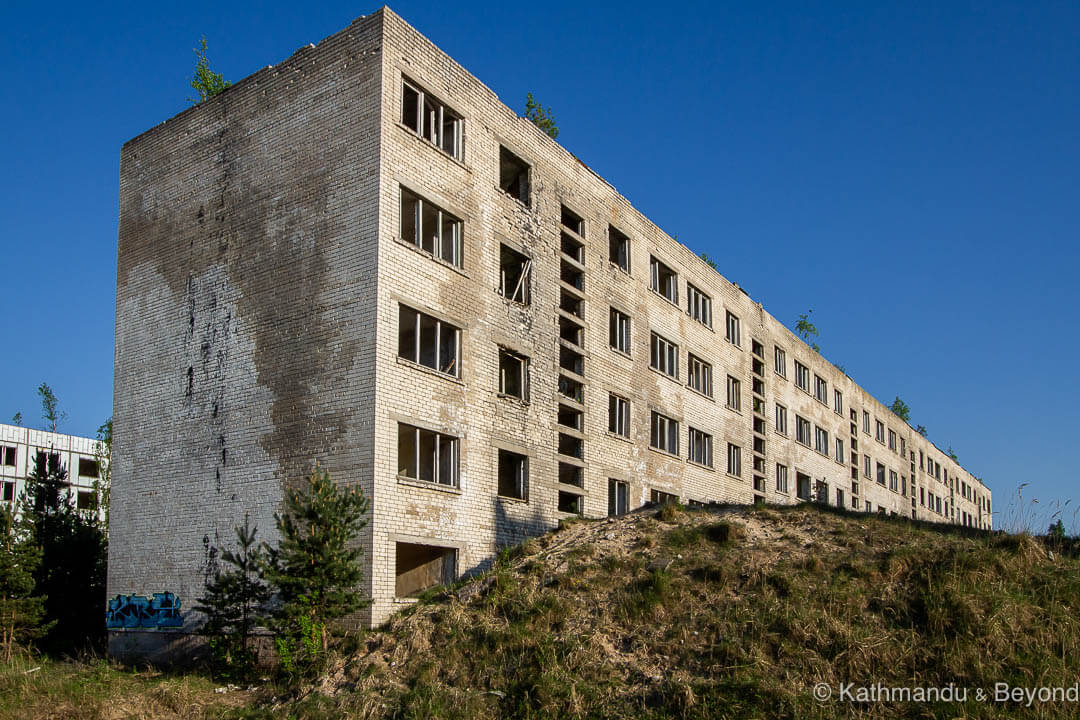 Irbene, Latvia
Irbene, Latvia
How to get to Cape Kolka on public transport
There are a few buses a day connecting Riga with the village of Kolka (2kms from the Cape) but it is definitely easier to have your own wheels in this part of Latvia, particularly as onward public transport to places other than Riga is rather scarce. It will be nigh on impossible to reach Ventspils International Radio Astronomy Centre and Irbene without your own transport.
Cape Kolka is more popular than you might imagine. There is a Visitors’ Centre, a cafe and a large carpark capable of accommodating coaches at the site. You even have to pay for parking at the Cape – currently €1.50 /hour for a car!
Kuldīga, Latvia
Kuldīga, 160km east of Riga, is a lovely town where the guys in the local Tourist Information Centre are still genuinely surprised and happy to see visitors that not native to the Baltic region. The fact that Kuldīga’s Old Town is a popular film location for Latvian period dramas should give some indication of how attractive the place actually is. Walk down any of the streets leading off the town hall square and you will stumble across traditional wooden houses, quaint cafes and lots of sculptures.
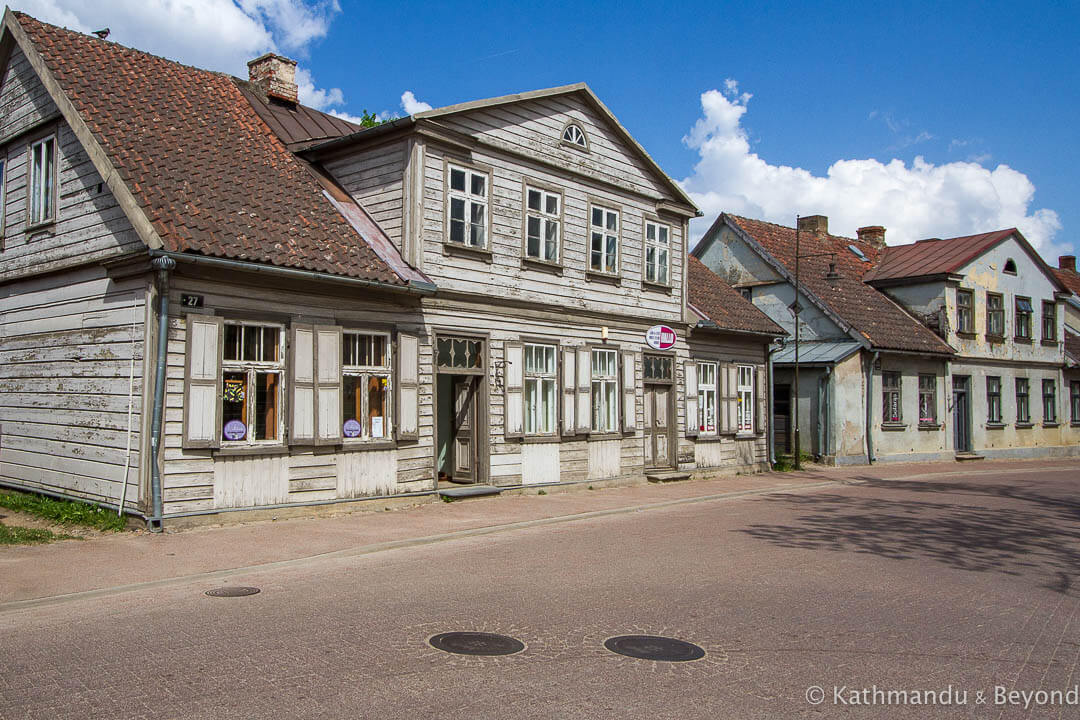 Old Town Kuldīga, Latvia
Old Town Kuldīga, Latvia
But, the real draw here is the town’s quirky waterfall. Spanning 240 metres in width, Kuldīga’s Venta Rapid is the widest natural waterfall in Europe. On the other hand, at around only 2 metres tall, the falls aren’t going to acquire any accolades for their height but this does mean that you can wade out to them and/or paddle in the shallow waters if the mood takes you and the weather is good enough. With plenty of banks on which to lounge as well as an attractive arched, red-brick bridge as part of the waterfall’s backdrop, this is indeed a delightful spot in which to while away a relaxing afternoon.
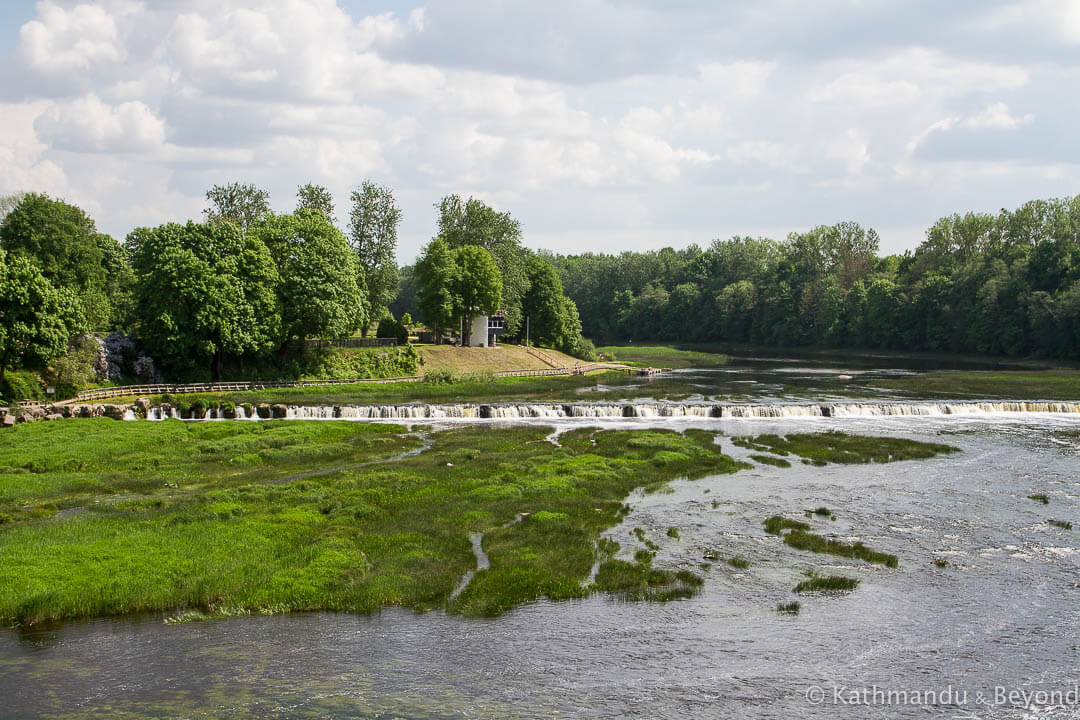 Waterfall Kuldīga, Latvia
Waterfall Kuldīga, Latvia
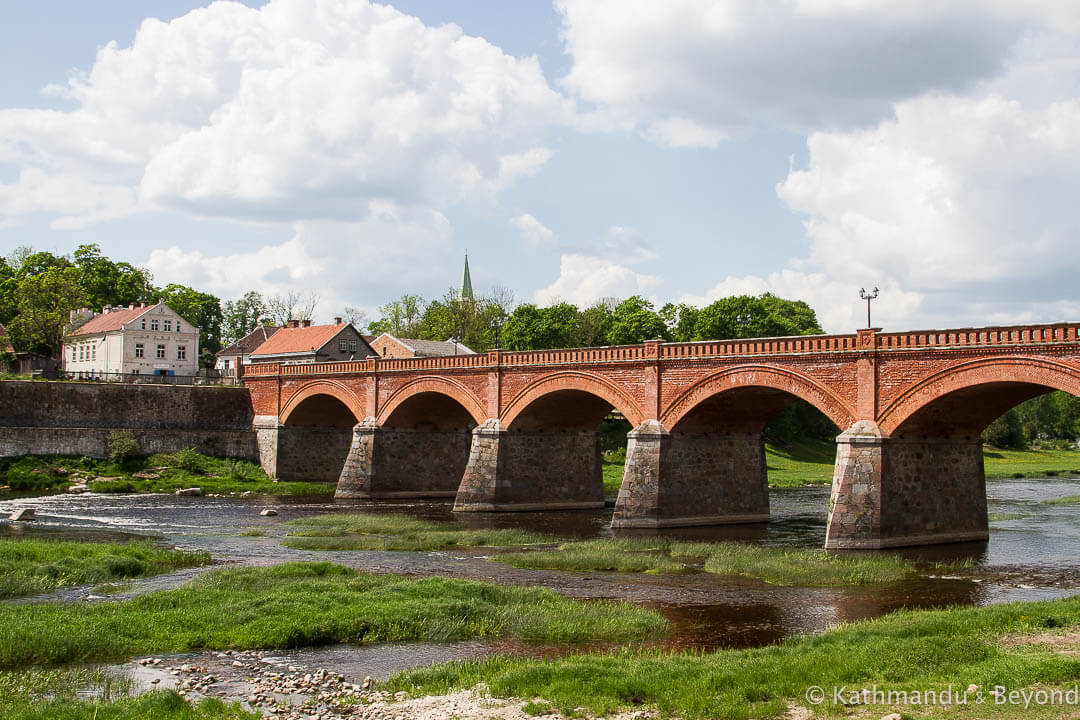 Red-brick bridge Kuldīga, Latvia
Red-brick bridge Kuldīga, Latvia
There are a few attractions outside of the city as well (the Tourist Information Centre will gladly expand on what) plus, there are plenty of places to stay in Kuldīga should you decide you want to stay awhile. But, if all you want to do is see the main highlights, then a couple of hours will suffice before moving on.
How to get to Kuldīga on public transport
There are regular buses connecting Kuldīga with Riga and also Ventspils and Liepāja.
Ventspils, Latvia
Cows, cows and more cows are the main reason to come to Ventspils. We’re not taking real ones here and the above statement isn’t strictly true given there are others things to do within the city limits but, the fifty-odd brightly coloured, and sometimes themed, glass fibre cows that are scattered throughout the city are certainly one of the main attractions. Quite a few of these motionless bovines have been given names. There’s ‘Latvijas melnā’ (Latvian Black Cow) and Šūpojošā govs’ (Cow on the Swings), as examples, as well as our personal favourite, Ms. Moo-Dunk’, the basketball cow who hangs out outside the sports centre in Ventspils. We only saw about a dozen of these sculptures but, if you fancy heading off on your own cow-themed treasure hunt then first make a beeline for the city’s Tourist Information Centre and ask for a copy of their dedicated brochure on the subject!
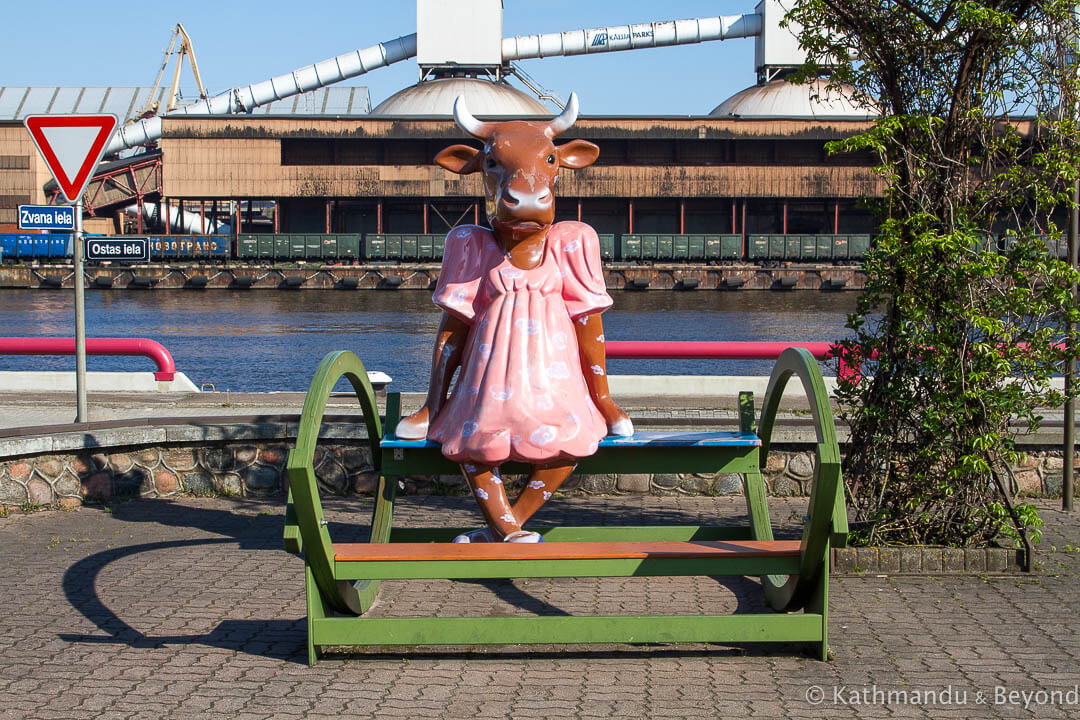 Ventspils, Latvia
Ventspils, Latvia
Away from the distraction of hunting for cows (Kirsty became a little obsessed and ultimately was rather miffed when I refused to traipse across the whole city looking for every single one of them!), Ventspils is, generally, a colourful place where many of the wooden houses and even the cranes inside the large docks are brightly painted. There are some nice cobbled backstreets to wander through and the beach is as fine as any along this stretch of the Baltic coast.
We arrived in Ventspils late in the day and had to get going by noon again the following morning (hence my lack of willingness to spend all of the limited time we had looking for damn cows!) but we very much liked the city and would have been content to have spent longer there if our schedule would have allowed it.
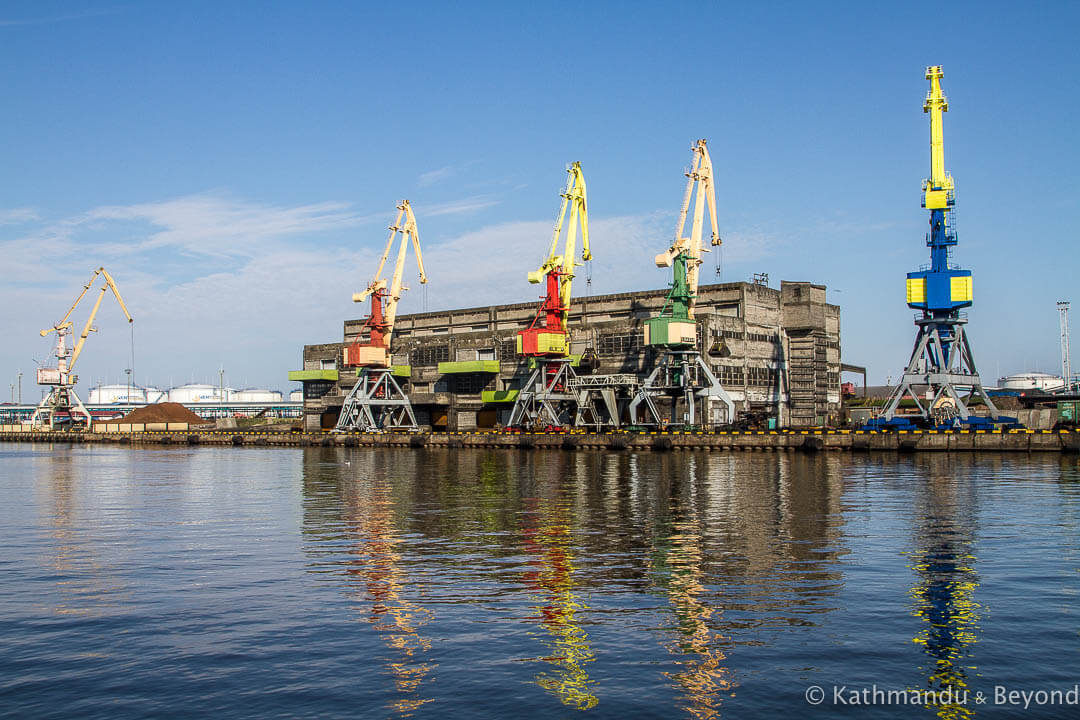 Ventspils, Latvia
Ventspils, Latvia
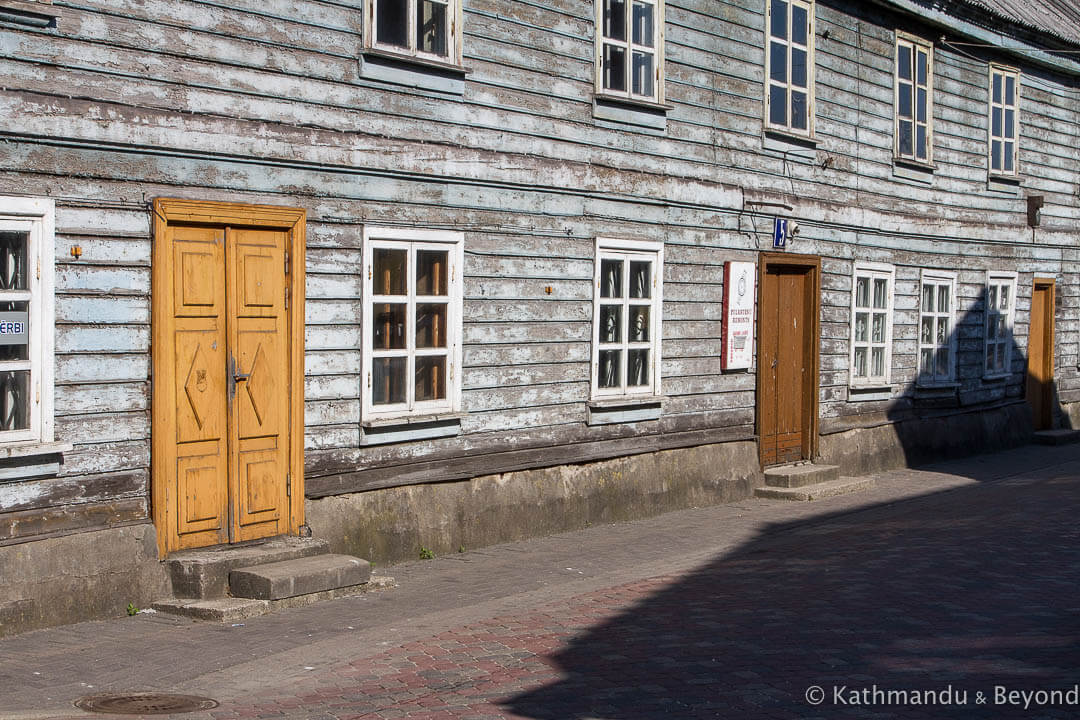 Ventspils, Latvia
Ventspils, Latvia
How to get to Ventspils on public transport
Ventspils is well connected by bus with Riga and there is also public transport to Liepāja and Kuldīga.
Liepāja, Latvia
We weren’t that taken with downtown Liepāja, a port city 220km west of Riga, but the northern neighbourhood of Karosta was such an absorbing place that we visited it twice in so many days.
The words Soviet, secret and abandoned are a familiar theme throughout this blog (and our travels in general in this part of the world!) and our time in Karosta was no exception. Beginning life as a Tsarist Russian naval port in the late 1800s, Karosta later became an important garrison town for the Soviet Baltic Fleet, now part of the Russian Navy and known simply as the Baltic Fleet. It remained off-limits to civilians throughout Latvia’s Soviet period and today the area is an intriguing hotchpotch of Imperial Russian architecture, Soviet-era apartment blocks and heavy industry from the now-cargo port that continues to operate there. Quite a few of the buildings, especially the Russian-era ones, are abandoned but most are not easily accessible.
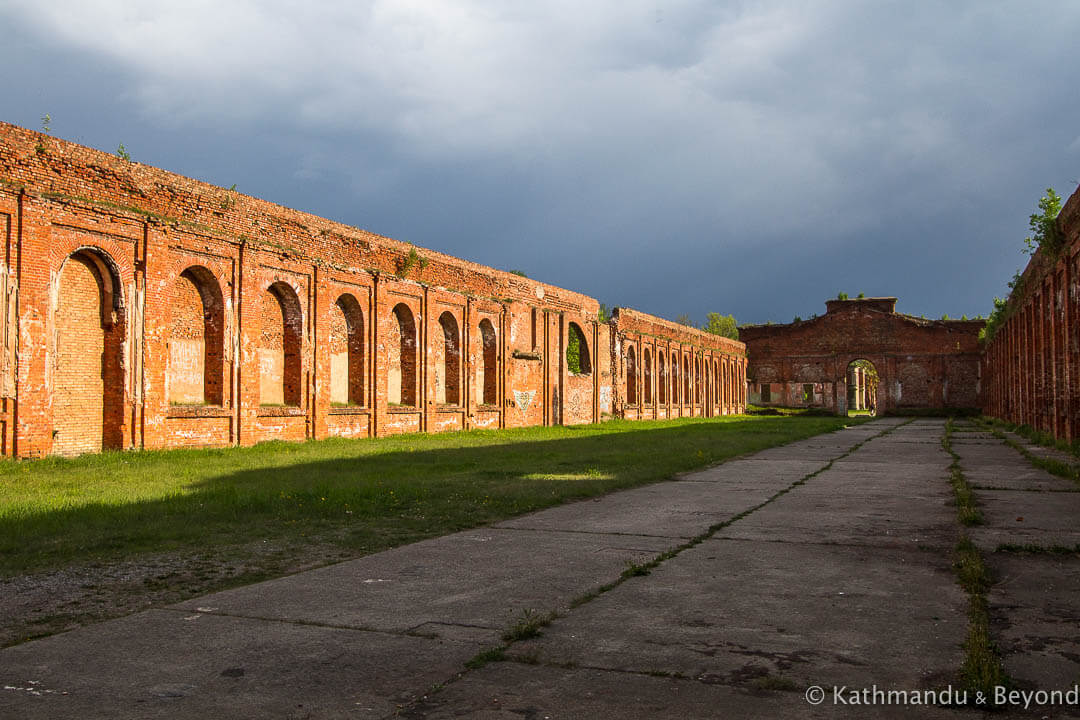 Former Riding Arean in Karosta (Liepāja), Latvia
Former Riding Arean in Karosta (Liepāja), Latvia
Karosta’s biggest attraction, and the reason it is on the map, mentioned in Lonely Planet etc., is the former prison. Dating back to the 20th-century and later used as a military prison by both the Nazis and the Soviets, it’s possible to visit this grim penal institute as part of a regular one-hour guided tour. For those wanting a more behind-bars-type experience, there are also a number of role-playing tours which you can book, ranging from being banged up and screamed at for an hour or so to actually spending the night inside one of the cells. We didn’t go inside the prison during our visit to Karosta but I did go on one of the interactive tours some years back and call me a wuss if you like, but it was a pretty fierce encounter and not one that I’d care to repeat!
If you are made of sterner stuff than me and fancy the experience then everything you need to know about Karosta Prison tours can be found on their website.
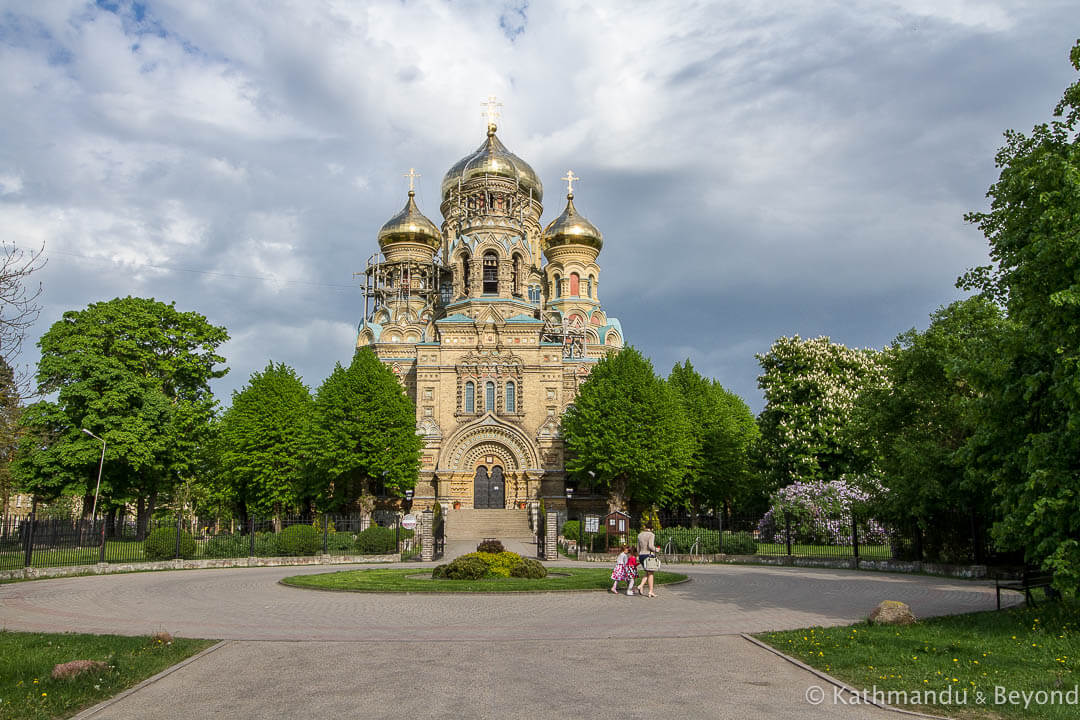
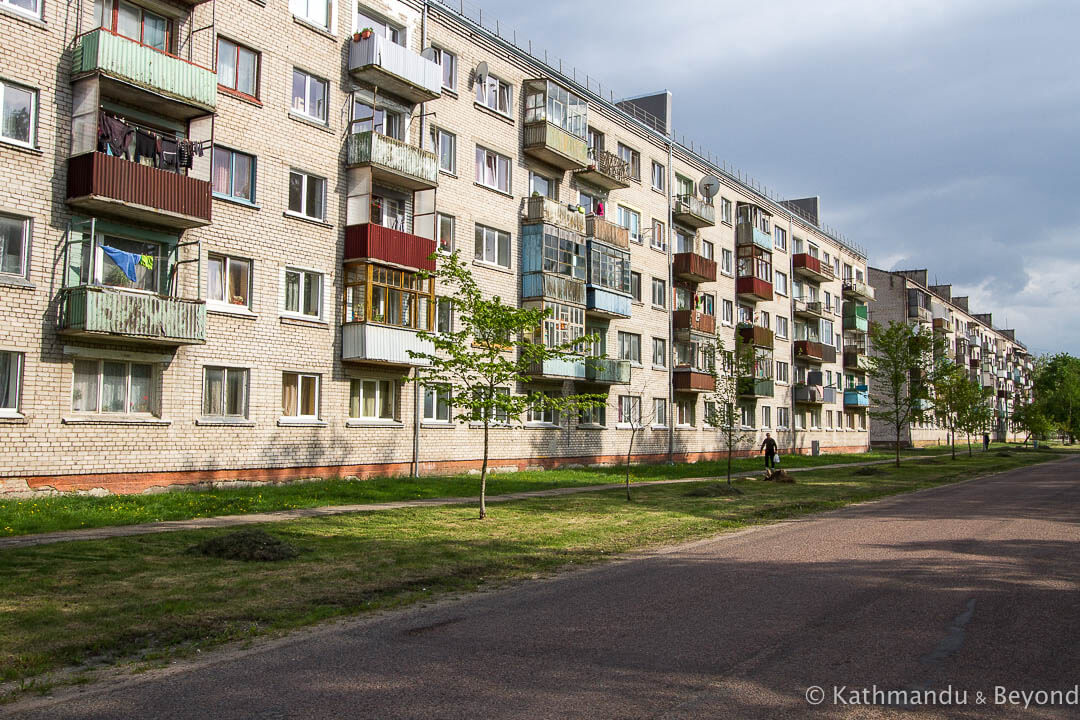
Above left: St Nicholas Orthodox Cathedral in Karosta (Liepāja) and above right: Soviet-era housing units in Karosta (Liepāja)
Northern Forts, Latvia
The Northern Forts, also called Ziemelu Forts, are another 6kms further north of Karosta. Eroding spectacularly into the Baltic Sea, these concrete defences were originally constructed as part of a much larger fortification system designed to protect both the city of Liepāja and the Russian naval base at Karosta. Russia’s main aggressor at the time (circa the 1890s) was Imperial Germany (1871-1918) but when a peace-pact was signed between the two empires not long after the fortress was completed, the bulwarks were purposely blown up by the Russians as part of the agreement (*). The dynamite, however, wasn’t that effective and what’s left today is a series of atmospheric concrete strongholds that are slowly being reclaimed by the sea.
(*) Destroying the fortifications not long before the start of WWI was probably not one of Russia’s shrewdest military moves … hindsight is a wonderful thing!
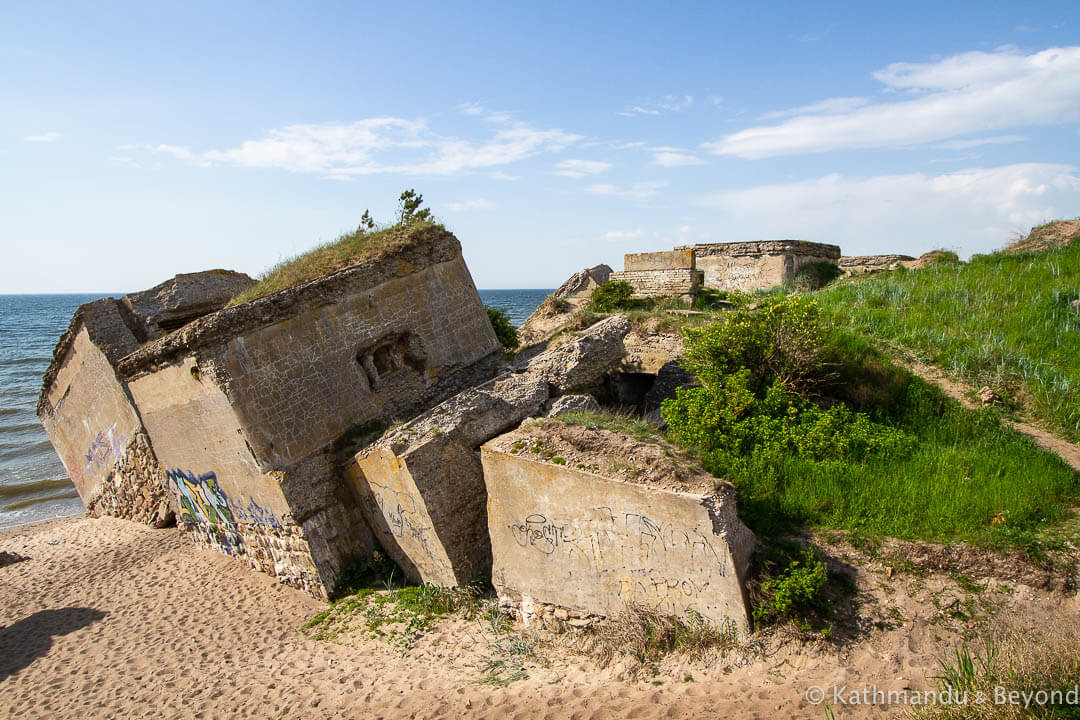 Northern (Ziemelu) Forts near Liepaja, Latvia
Northern (Ziemelu) Forts near Liepaja, Latvia
You are free to explore any part of the fortifications that takes your fancy, even the precarious-looking sections that look like they are about to collapse into the Baltic Sea at any minute. If you have your own car, you can also visit other remnants of the fort that are further inland.
Be wary of midges – we visited the area in May and they were out in force!
How to get to Liepāja on public transport
Liepāja is well connected by bus with Riga and there is also public transport to Ventspils and Kuldīga.
Karosta is 4km north of the centre of Liepāja. Local buses connect the two on a regular basis but Karosta itself is quite spread out so it’s best to have your own transport if possible. Cycling round would be a nice way to see Karosta.
At a push, it is also possible to cycle out to Liepāja’s other attraction.
Off the Beaten Track Places in Lithuania
Druskininkai, Lithuania
Situated in southern Lithuania, close to the border with Poland and Belarus, Druskininkai is an agreeable spa town that saw its heyday during the times of the Russian Empire leading all the way through to the fall of the Soviet Union. Its popularity waned for a period thereafter but is now on the rise again.
These days, Druskininkai is a delightfully low-key place that is worthy of an overnight or two. Wandering around, you’ll come across traditional wooden houses and colourful churches as well as several balneological resorts and a few ageing sanatoriums from both Tsarist and Soviet times. There is a pleasant park and lake right in the middle of town as well as enjoyable walking to be had in the forested land to the north of the city centre that leads to the Nemunas River, Lithuania’s longest tributary.
If you visit Druskininkai during the more popular season (May to October) there is also the opportunity to cruise along the Nemunas River on a modern-style paddle steamer or hire bicycles and head off on one of the bike trails set out by the local tourist board.
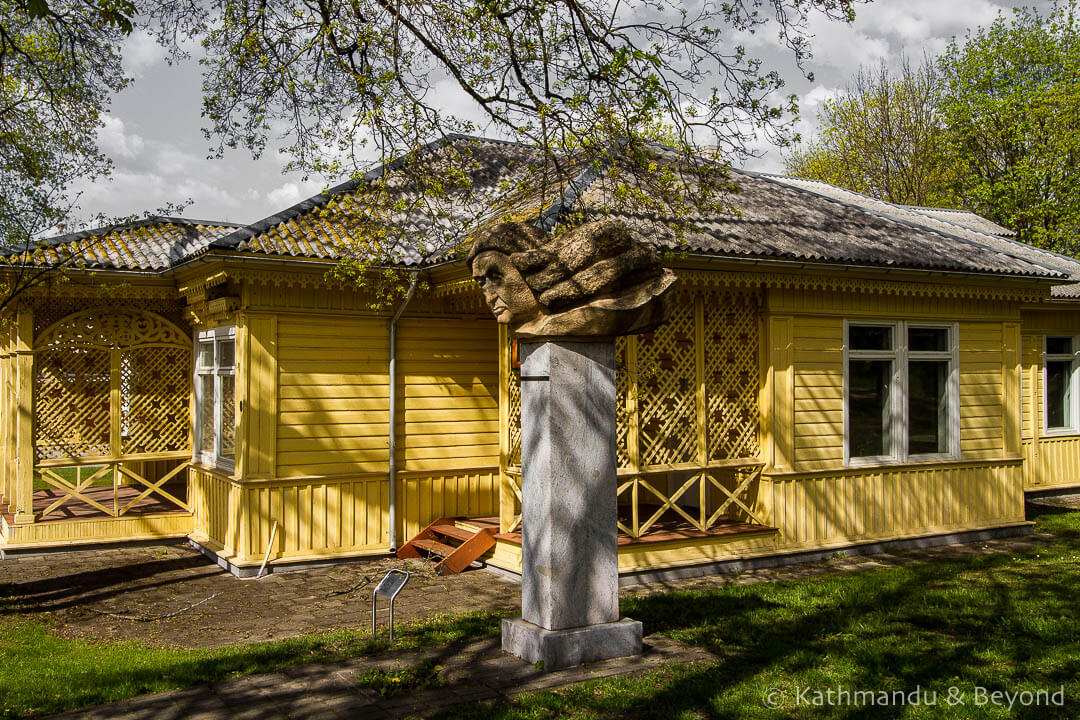 Druskininkai, Lithuania
Druskininkai, Lithuania
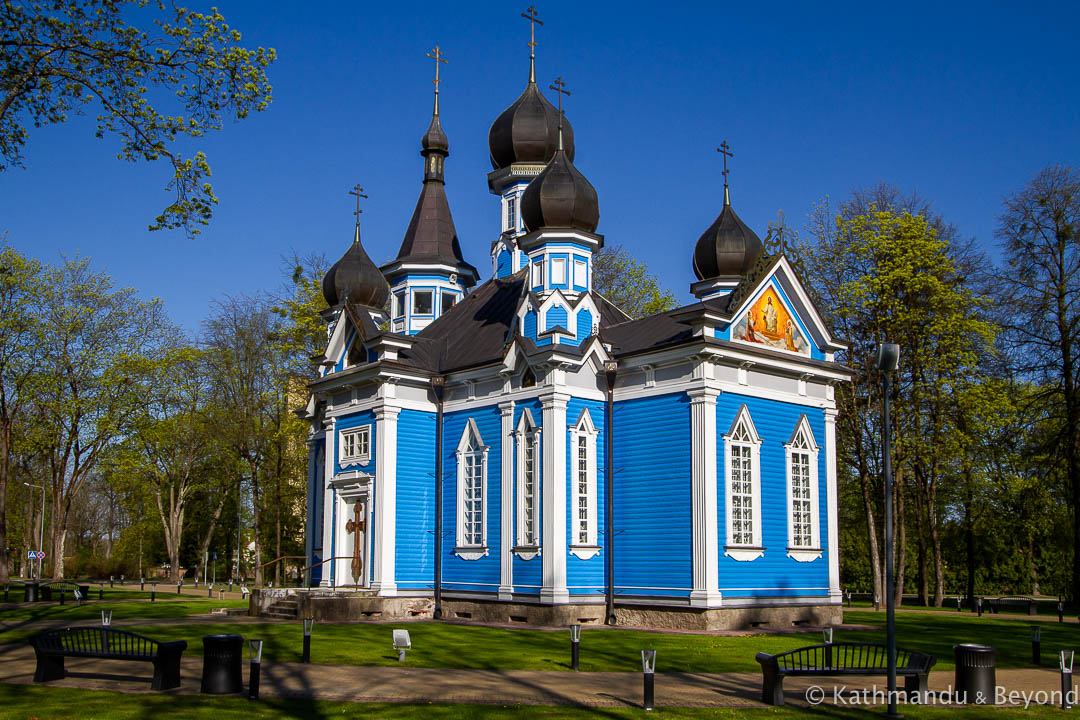 The Joy of All Who Sorrow Church in Druskininkai, Lithuania
The Joy of All Who Sorrow Church in Druskininkai, Lithuania
Druskininkai is also a good base for visiting Grutas Park, essentially a graveyard for Soviet-era statues and memorials some 9km northeast of the city. Be aware though that, as well as communist memorabilia, there is also a mini-zoo on site and questions have been raised about the welfare of the animals in recent times (we understand the zoo aspect of the park has been expanded since our visit in May 2016) so it’s up to you if you want to visit or not. If you do decide to go, our dedicated post on the subject should be of help, particularly in relation to getting there on public transport. Click here to read more.
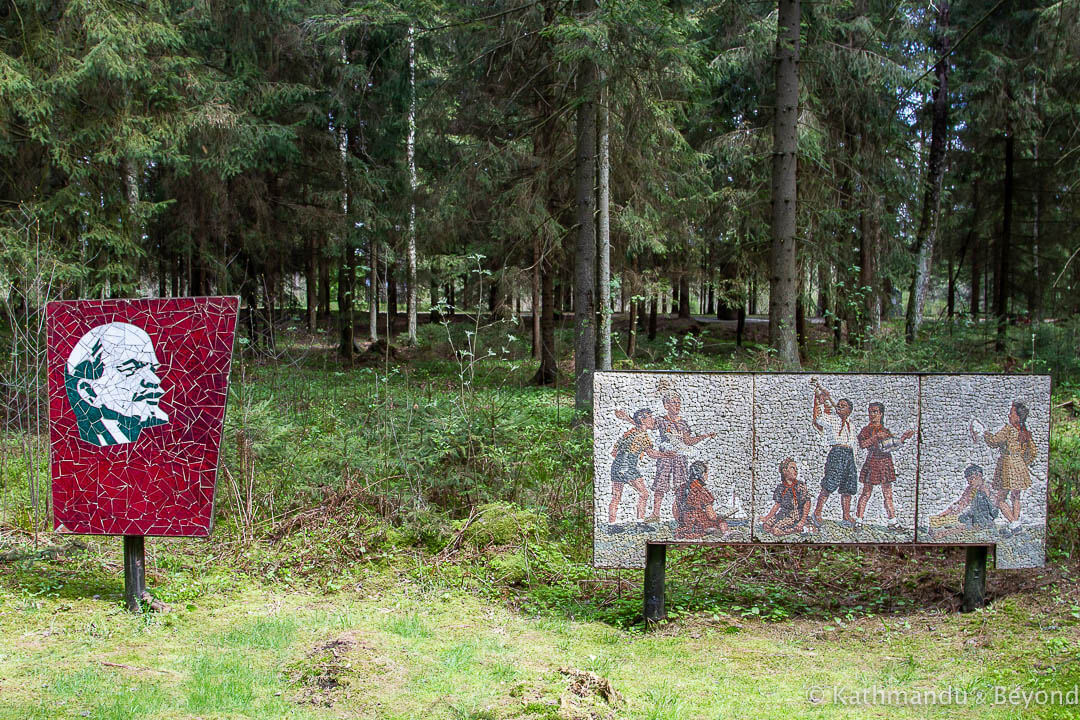 Grutas Park near Druskininkai, Lithuania
Grutas Park near Druskininkai, Lithuania
How to get to Druskininkai on public transport
There are plenty of public buses linking Druskininkai with both Vilnius and Kaunas, Lithuania’s second-largest city.
There are also a few daily buses running to Grodno (also known by its Russian name of Hrodna) in Belarus. We did this route a few years back and thought it was an interesting way of linking the two countries. For our suggested itinerary using this border crossing read more here.
Visaginas, Lithuania
Visaginas is not an attractive town in the way that so many of the places on this list are but it is certainly one of the most interesting, especially if you are keen to learn about Lithuania’s more recent (read Soviet) history. The city, which is situated 160km northeast of Vilnius, was established on the site of a series of old villages in the mid-1970s as a place to live for those that worked at the nearby atomic reactor known as Ignalina Nuclear Power Plant.
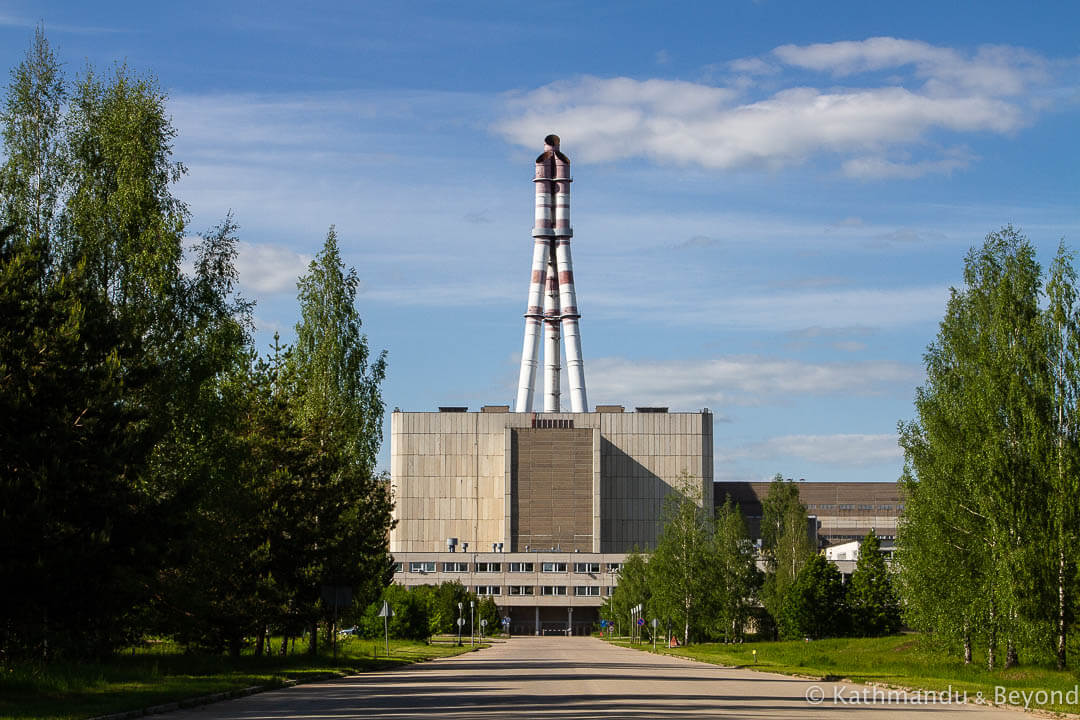 Ignalina Nuclear Power Plant near Visaginas, Lithuania
Ignalina Nuclear Power Plant near Visaginas, Lithuania
As you’d expect in a city that is only around forty years old, all of the architecture is modern. There are no cobbled streets or twisting alleyways to explore but, Visaginas is an engaging place to discover nonetheless, and particularly if you combine a visit with a guided tour of the nuclear power plant or, at the very least, have a look around the Visitors’ Centre situated on the site.
I hasten to add that we neither did a guided tour of the plant nor went inside the Visitors’ Centre but this was down to our poor planning rather than a lack of desire. But, we did spend quite a bit on time in Visaginas itself and were enjoying the place by the time we left several hours later.
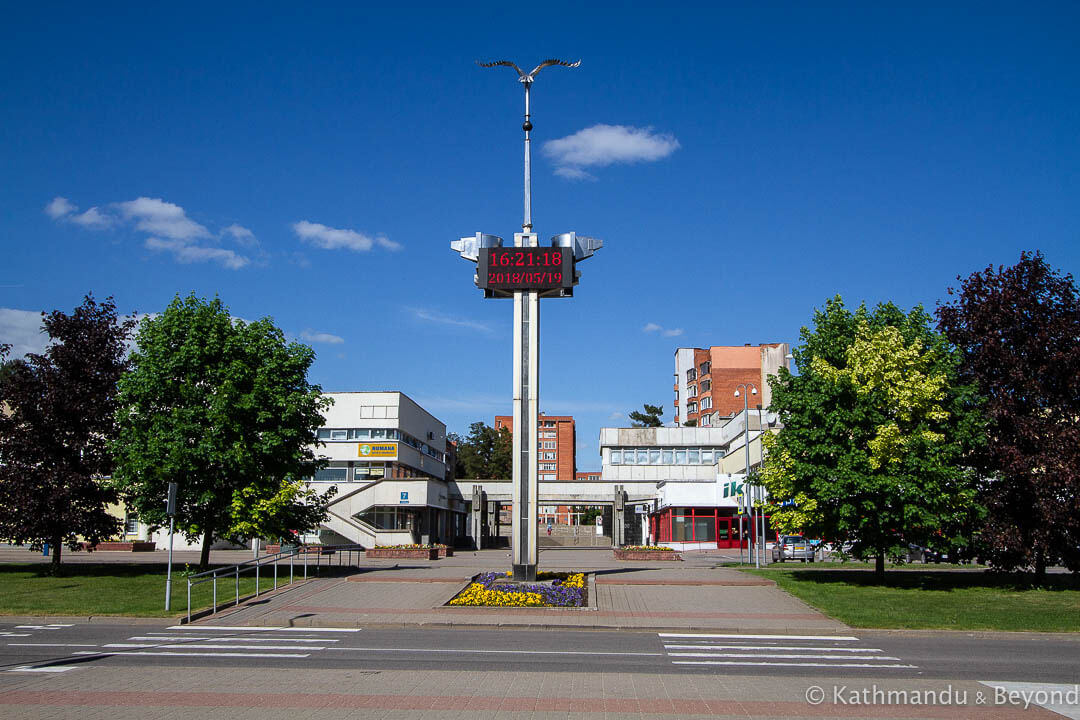 Visaginas, Lithuania
Visaginas, Lithuania
How to get to Visaginas on public transport
We have written a dedicated post about Visaginas and Ignalina Nuclear Power Plant so, for more history as well as practical information on how to visit using public transport and also book a tour of the power plant, read more here.
Šiauliai, Lithuania
Although not hugely endowed with sights, Šiauliai is a decent place to break the journey if you’re travelling around Lithuania, either as part of a road trip or by public transport, and don’t have the flexibility of moving on. As with many cities in the region, the architecture is a combination of late 19th, early 20th century and Soviet-era styles and Šiauliai’s most notable attraction is the 1908 art nouveau styled Frenkelis Villa. Built for a wealthy business tycoon who made his fortune in leather, the building is now a museum.
But, the main reason to come to Šiauliai is to visit the wondrous Hill of Crosses, located some twelve kilometres north of the city. One of the country’s must-see sights, we would defy anyone, religious or not (we’re not), to leave the Hill of Crosses without at least some appreciation of how inspirational this place is for the Lithuanian people.
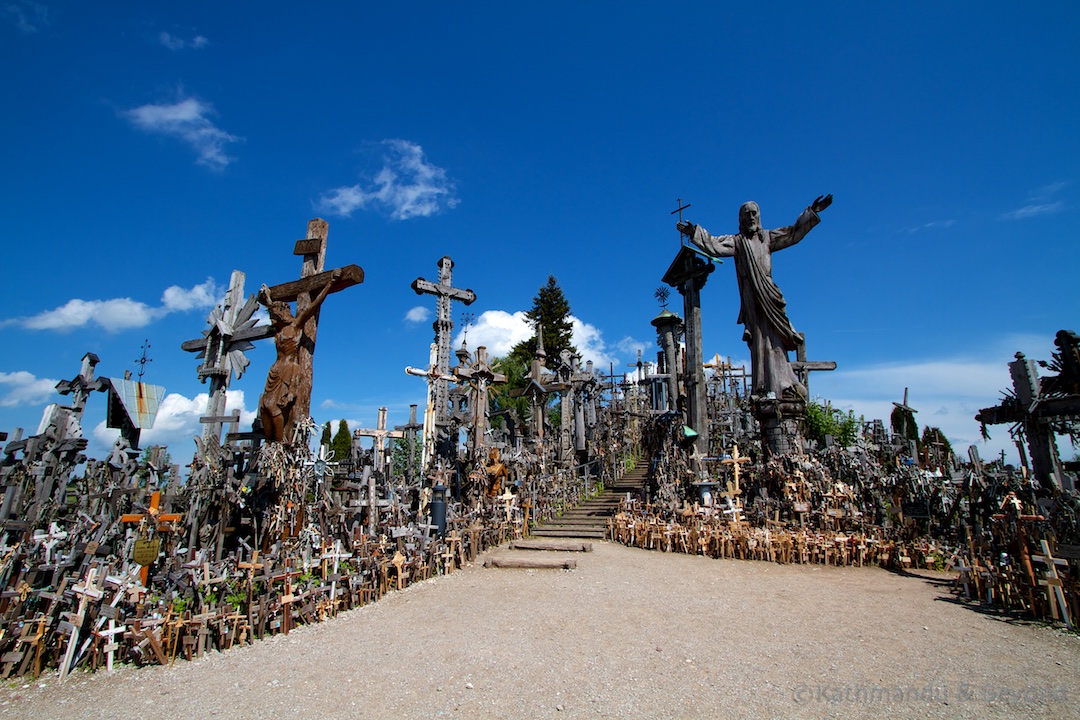 Hill of Crosses near Šiauliai, Lithuania
Hill of Crosses near Šiauliai, Lithuania
How to get to Šiauliai on public transport
Among other cities, Šiauliai is connected by bus with Vilnius, Kaunas and Riga. There are also a few daily trains linking Šiauliai with Vilnius. It is possible to get to the Hill of Crosses on public transport from Šiauliai. Click on the link in the paragraph above to find out how.
Elektrenai, Lithuania
Like Visaginas, the medium-sized city of Elektrenai was created during Soviet-times to house workers from a nearby power plant. We don’t think the city is as interesting as Visaginas, but it does have one very enticing draw if you are into urban exploration and discovering abandoned locations; a decaying amusement park known as Children’s World.
The theme park is very photogenic, especially the indoor waltzers and the tangled mess of metal that makes up the roller coaster. What’s more, there are other things to see in the city and the abandoned park is relatively easy to access so, all things considered, Elektrenai is a great, off-the-beaten-track destination to visit for half a day or so.
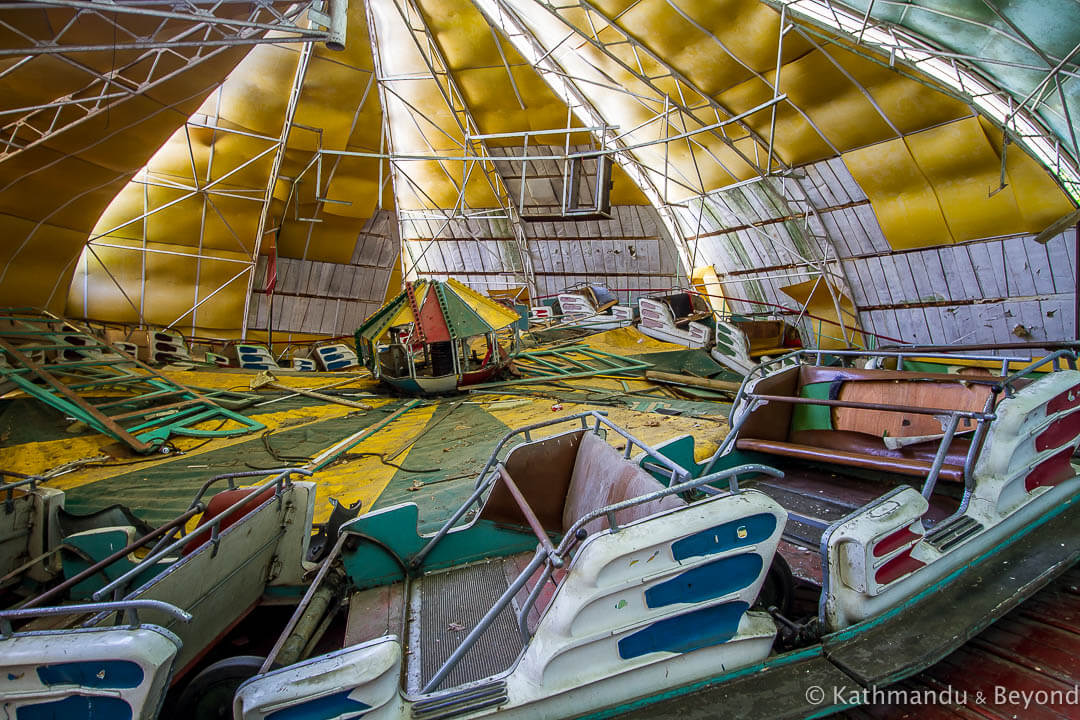
How to get to Elektrenai on public transport
Elektrenai is located practically halfway between Vilnius and Kaunas and therefore dead simple to reach on public transport as any bus travelling between the two cities will be able to drop you off/pick you up.
If you travel light, you could even consider breaking the Vilnius – Kaunas journey and having a look around Elektrenai before moving on.
Our longer post about Elektrenai provides more information about the city and the former amusement park as well as public transport options.
Resources for bus and train travel in the Baltics
Buses in the Baltics
Generally, bus travel is the most straightforward form of public transport in the Baltic States – intercity buses are clean, comfortable and generally run on time.
For travel between the capitals, we’ve used Lux Express on several occasions. The service is impressive (with features such as free hot drinks, Wi-Fi, and seatback touchscreen Internet access (that actually works!)). Lux also has routes connecting Estonia and Russia and several other cities in the region. Often, you’ll find special offers for advance bookings.
You can also compare and book other bus company’s routes and fares at Omio.
For buses within a particular country, try these websites:
Estonia: Lux Express or T pilet
Latvia: JSC “Riga International Coach Terminal” or 1188
Lithuania: Kautra
Train travel in the Baltic States
If the Rail Baltica Project comes to fruition, it will link the three Baltics capitals with each other (as well as Warsaw in Poland) with high-speed trains. But for the foreseeable future, bus travel (or air) is the way to go unless you’re a fan of slow tortuous journeys. Generally, we choose train travel over road journeys but not in the Baltics. For example, the train journey from Tallinn to Riga takes almost ten hours and requires a train change at the border.
Shorter journeys within a country are an option and you can check the following websites for current train timetables and routes:
Estonia: elron.ee/en
Latvia: pv.lv/en
Lithuania: traukiniobilietas.lt
READ MORE POSTS FEATURING ESTONIA, LATVIA OR LITHUANIA
ARE YOU INSPIRED TO TRAVEL OFF THE BEATEN PATH IN THE BALTIC STATES? PIN THIS POST TO YOU TRAVEL BOARDS…
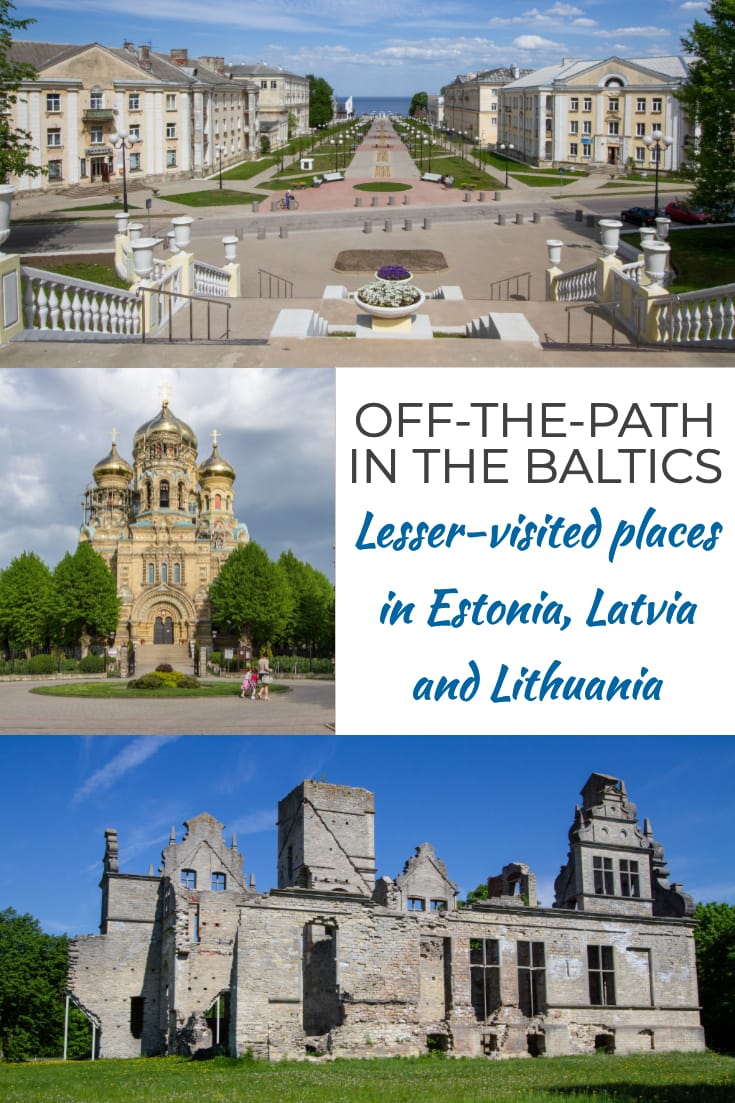
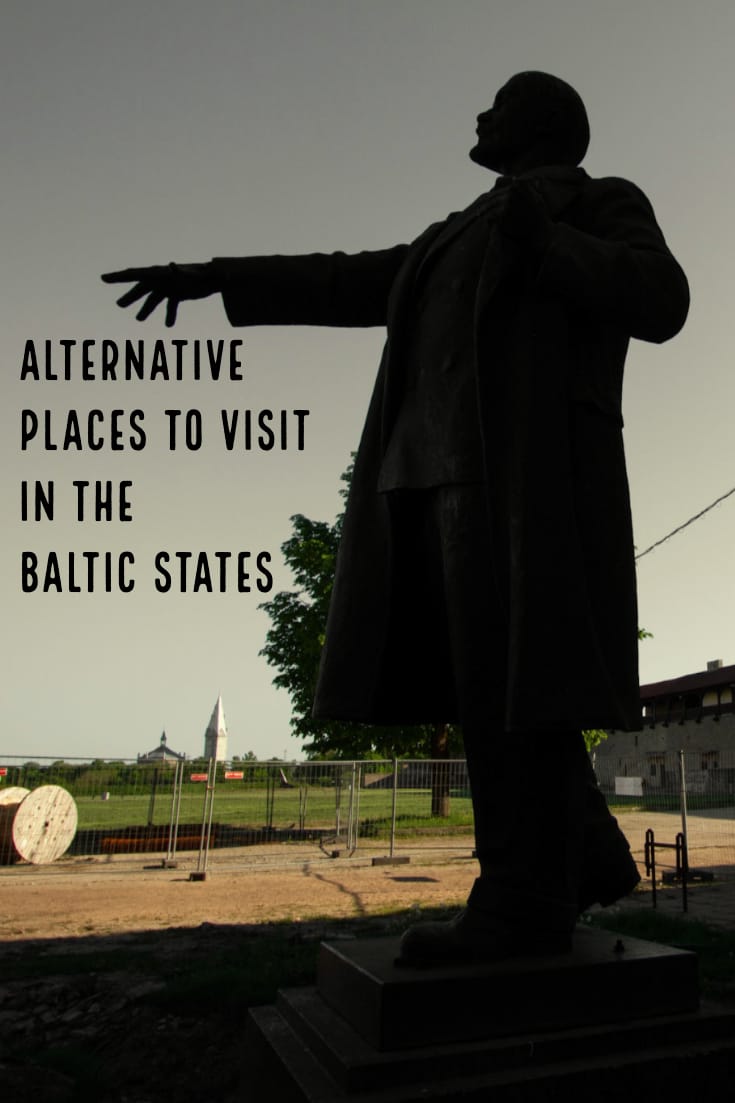
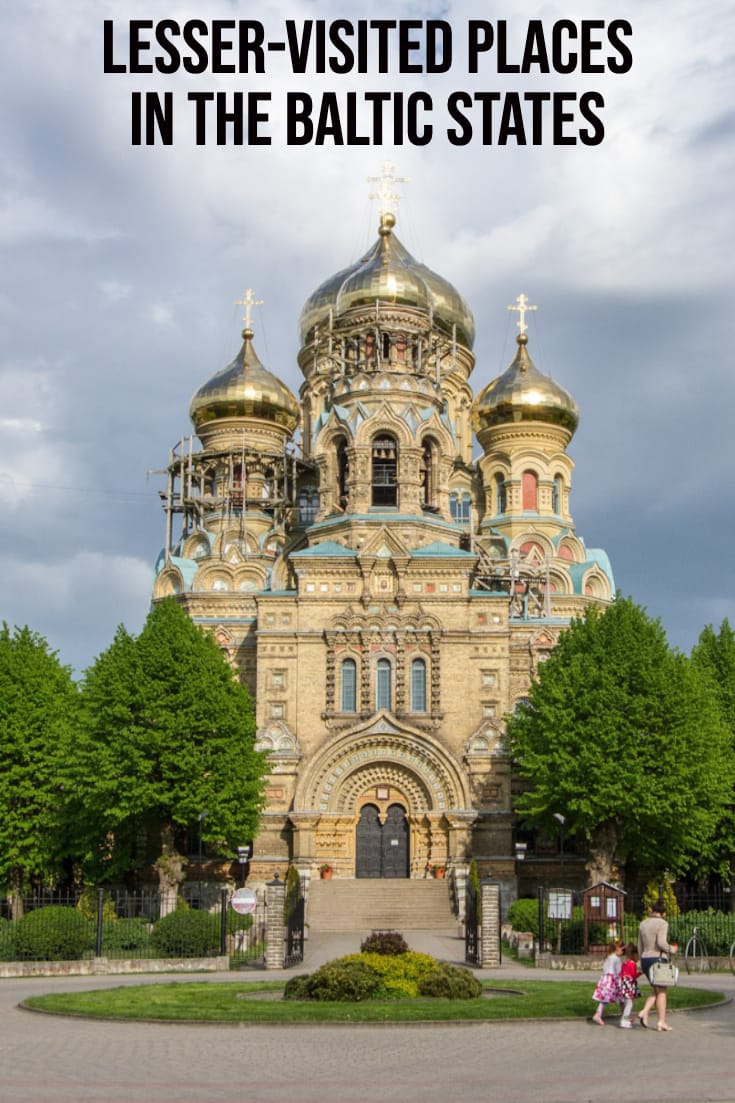

You always find those off the path gems. Well done guys.
Thanks, it’s a combination of research and just stumbling across them. Sometimes the latter is more fun!
I have been to none of these places and love the suggestions you have listed. Hope to visit the Baltic countries soon and find amazing things!
It’s certainly a delightful part of northern Europe and has plenty of interesting things to see and do! Enjoy it when you do go!
Makes me realize how much I have missed in the Baltics …. and always love to see the random Lenin.
Indeed, there’s plenty to see away from the capitals. If you decide to return, I would recommend hiring a car as some of the places above are pretty time consuming to reach on public transport.